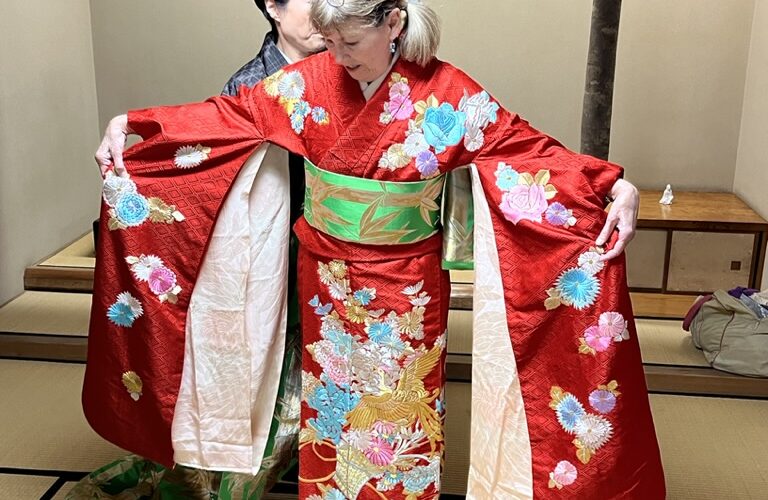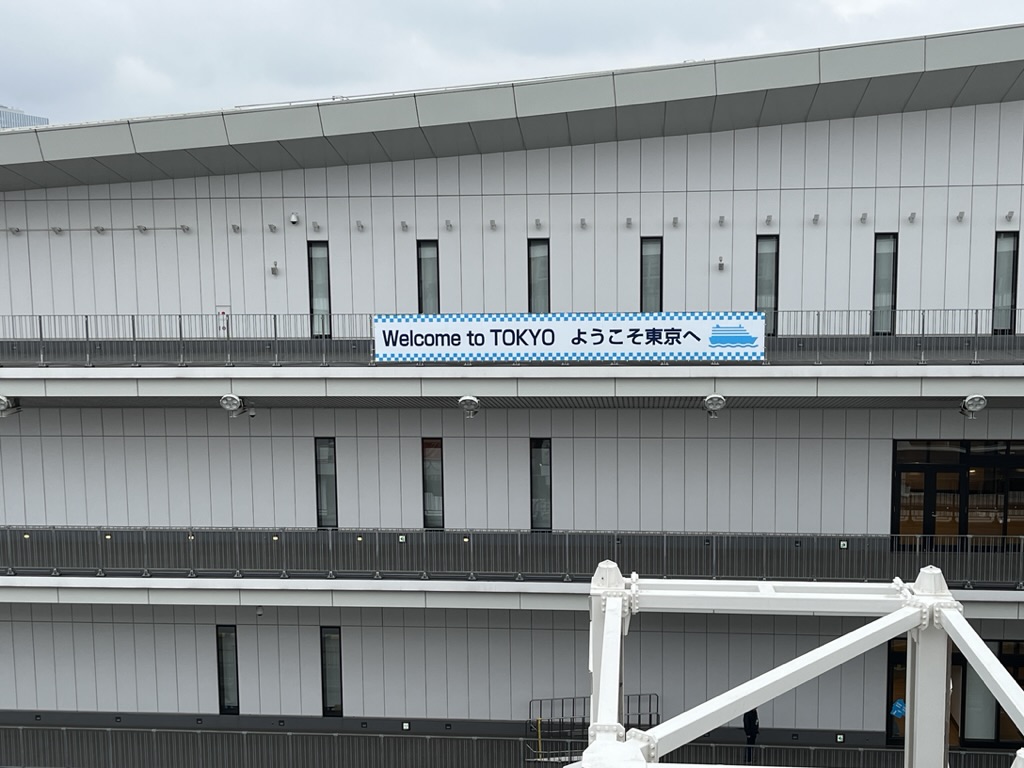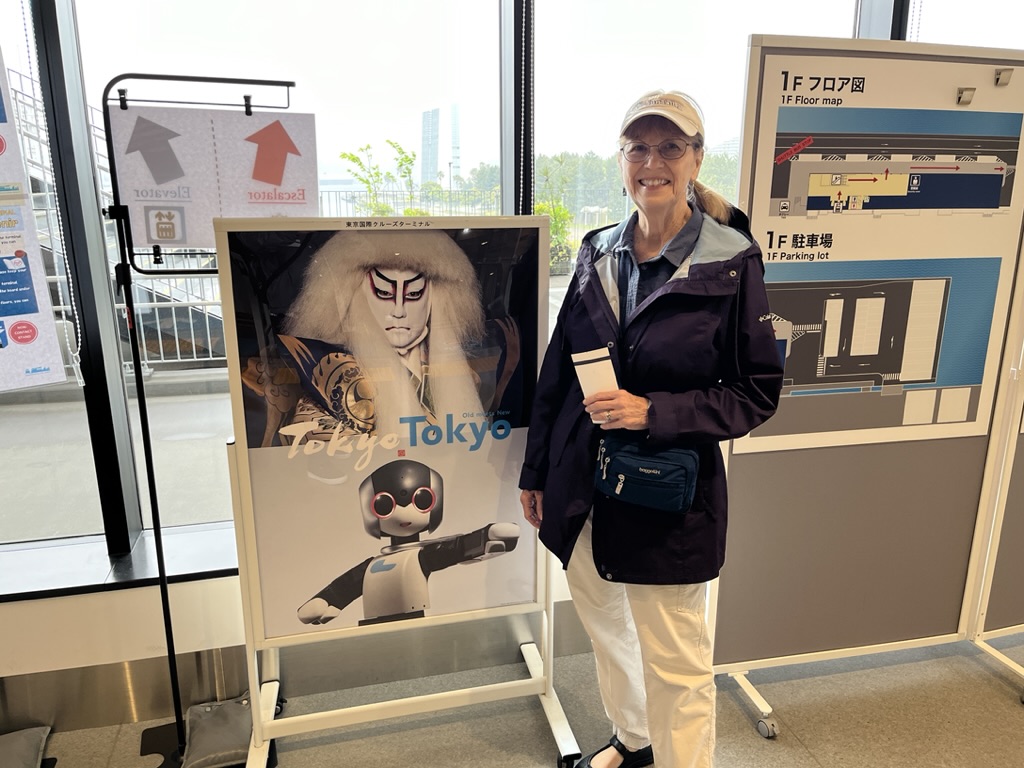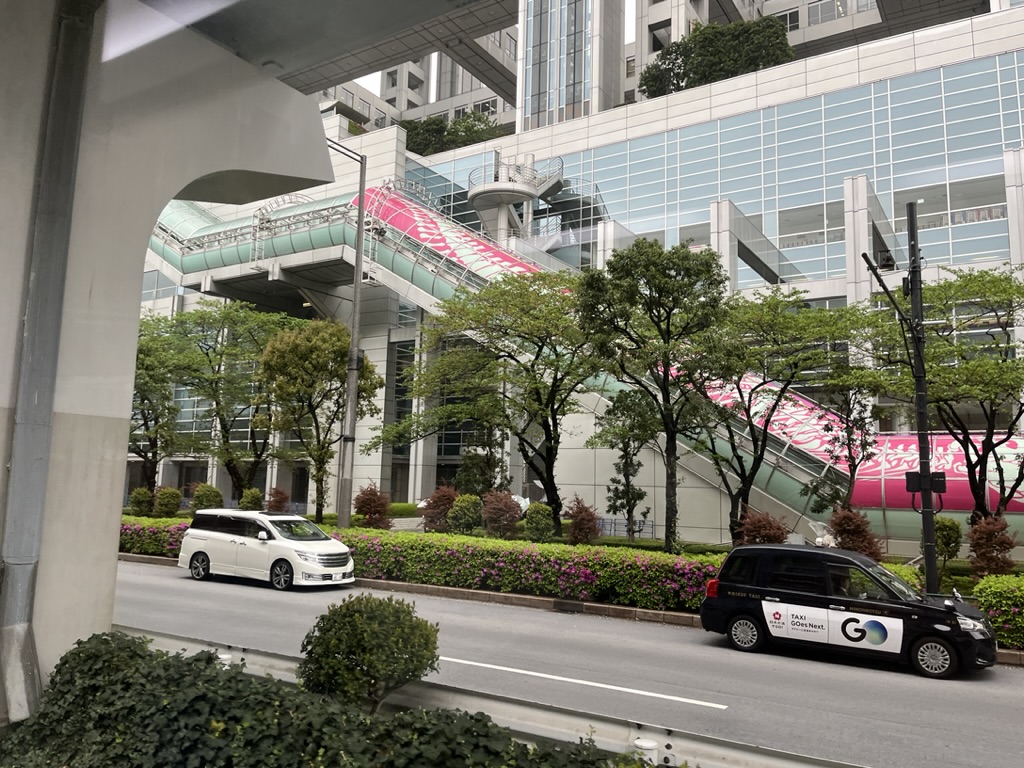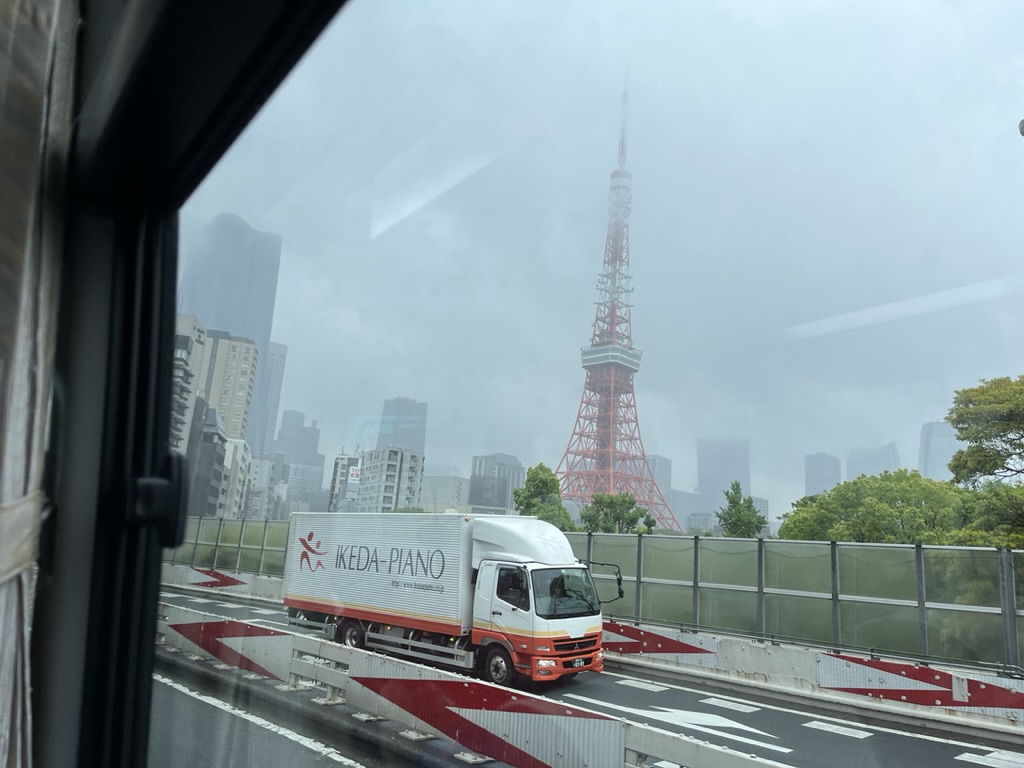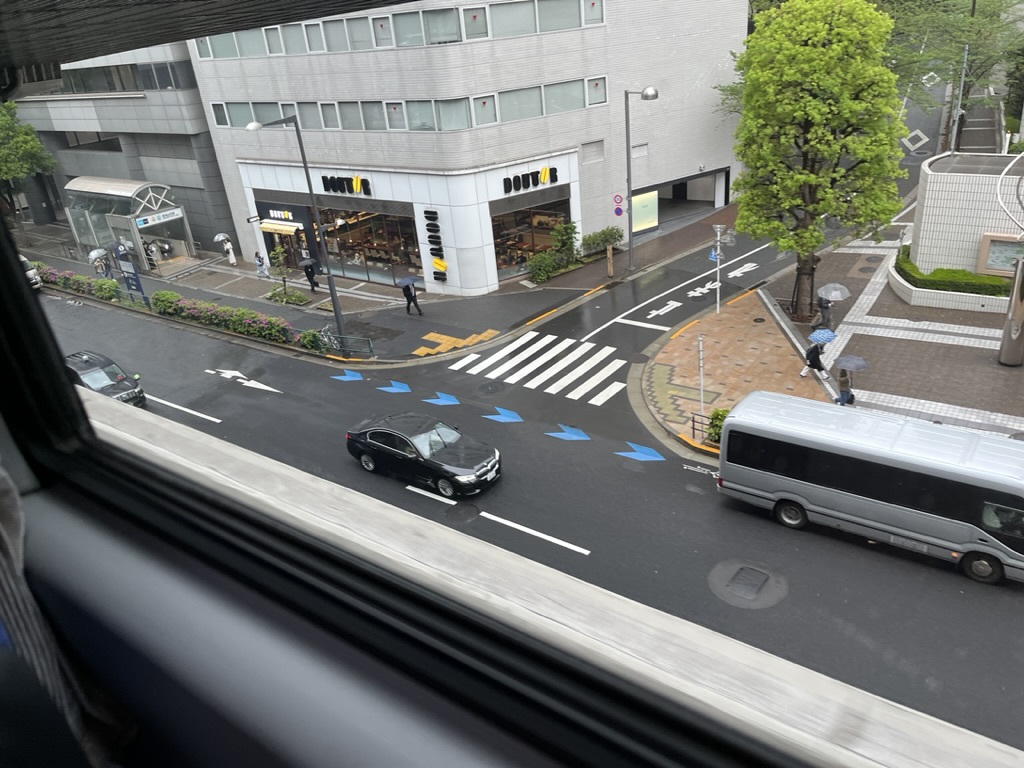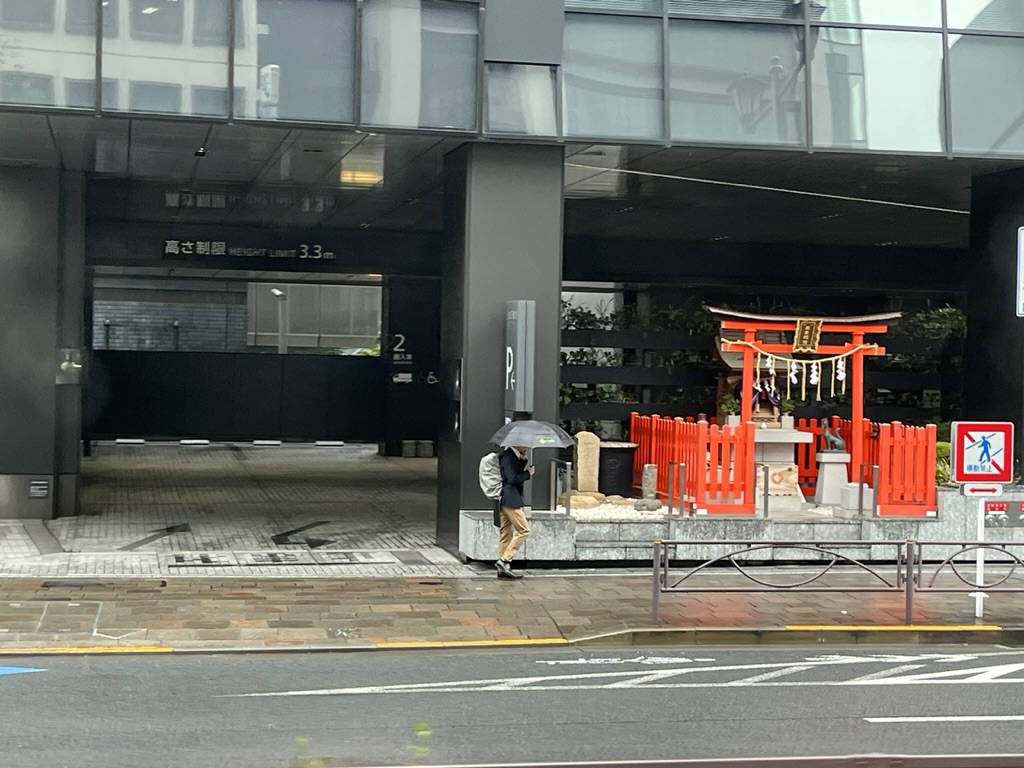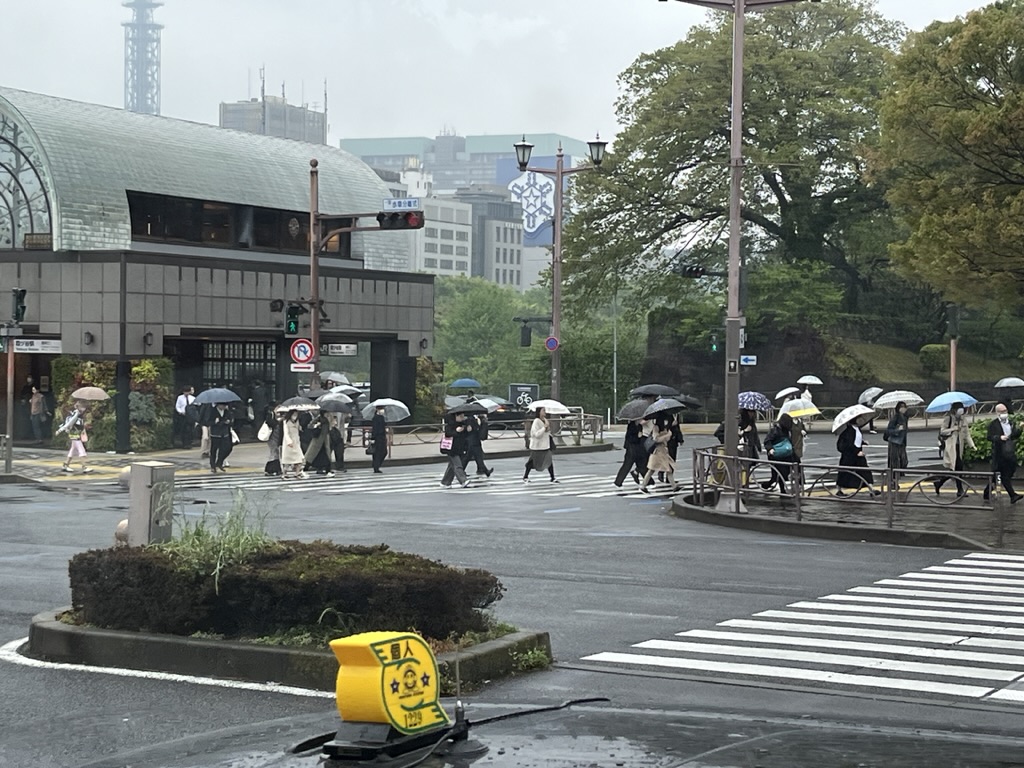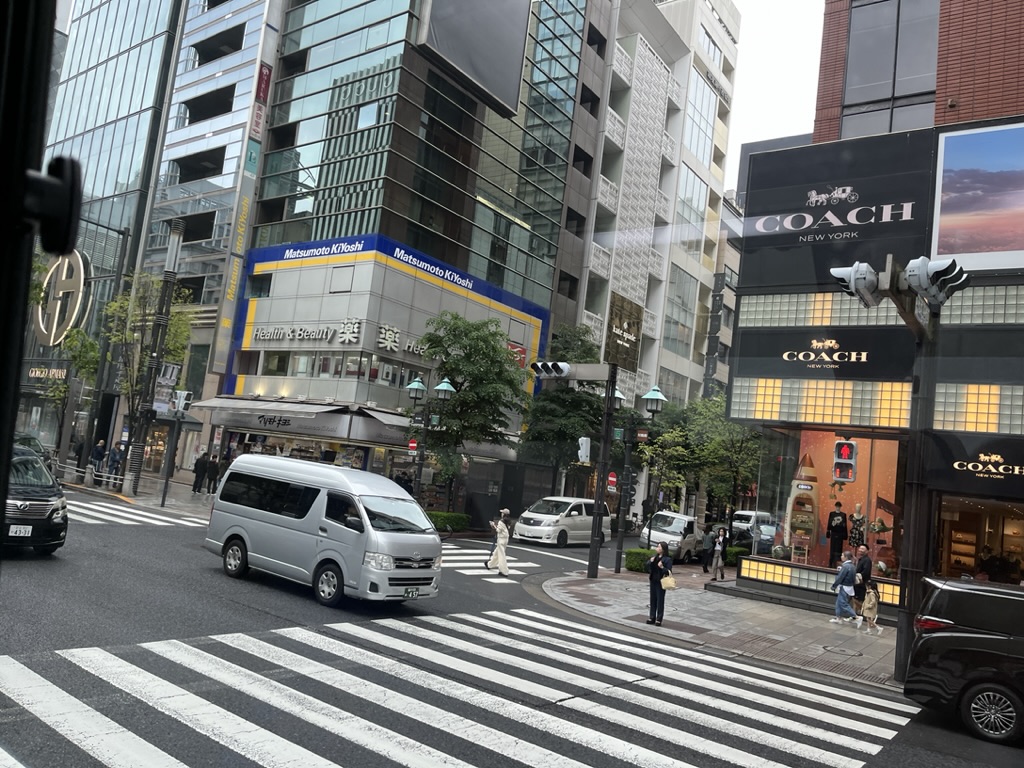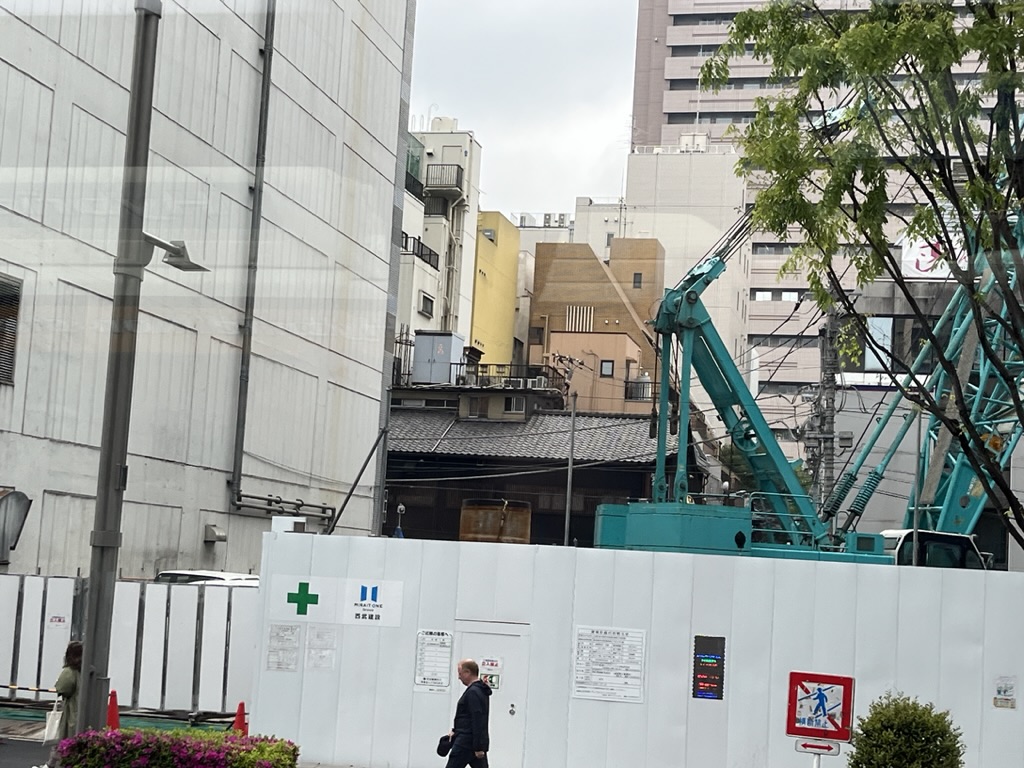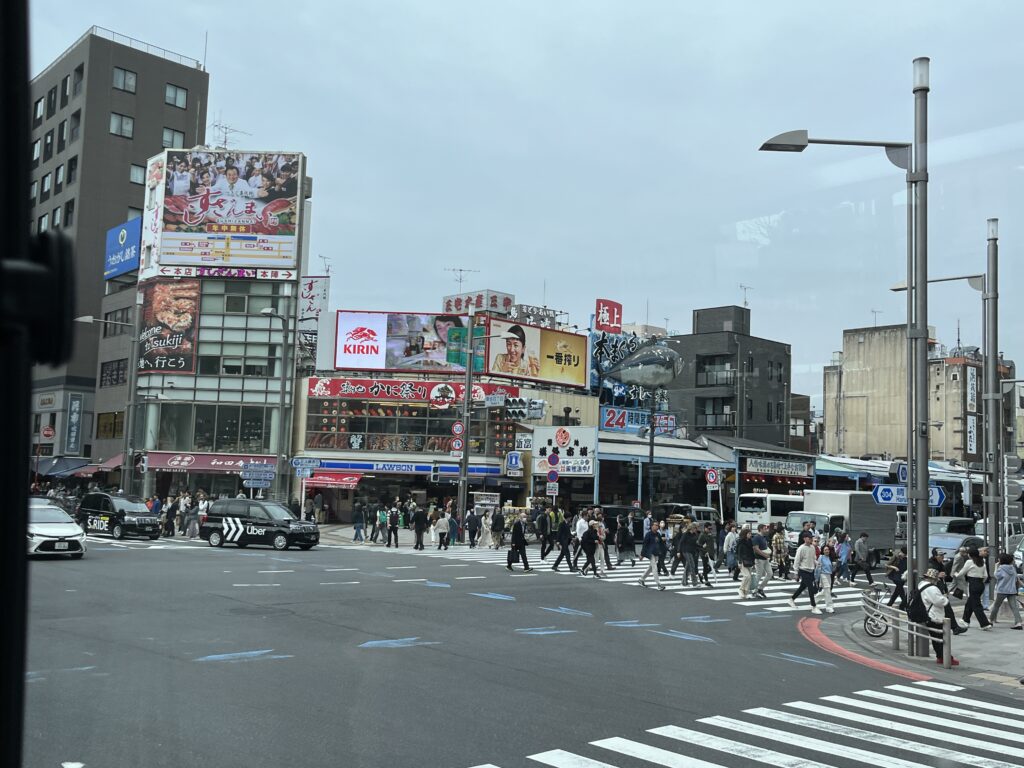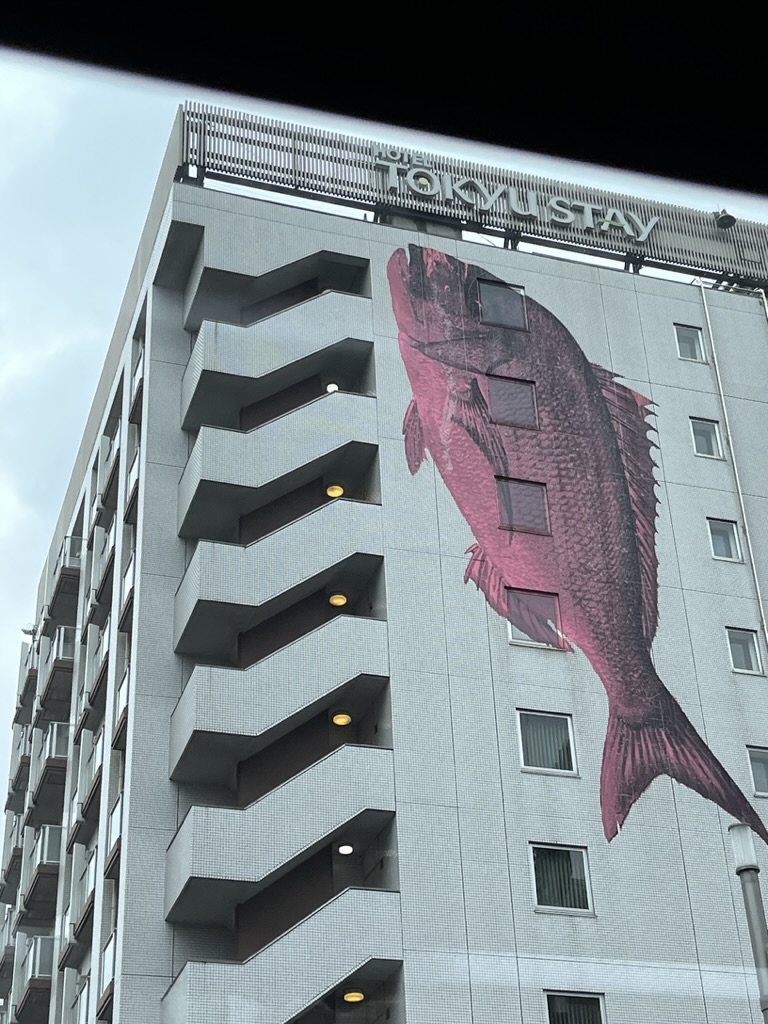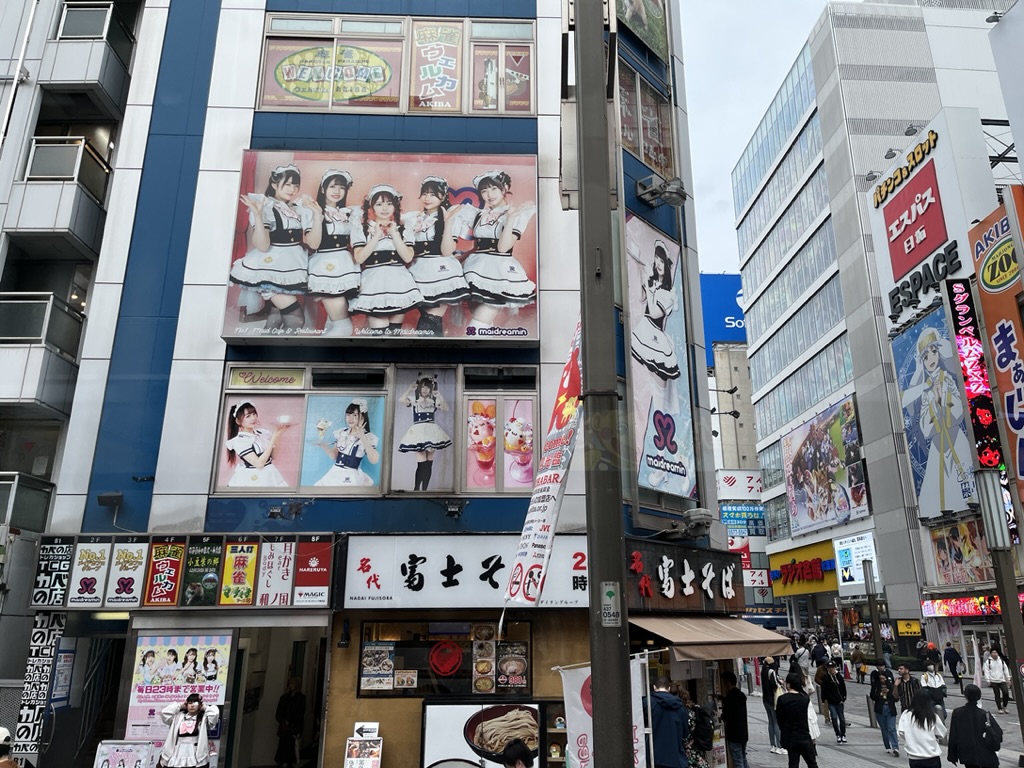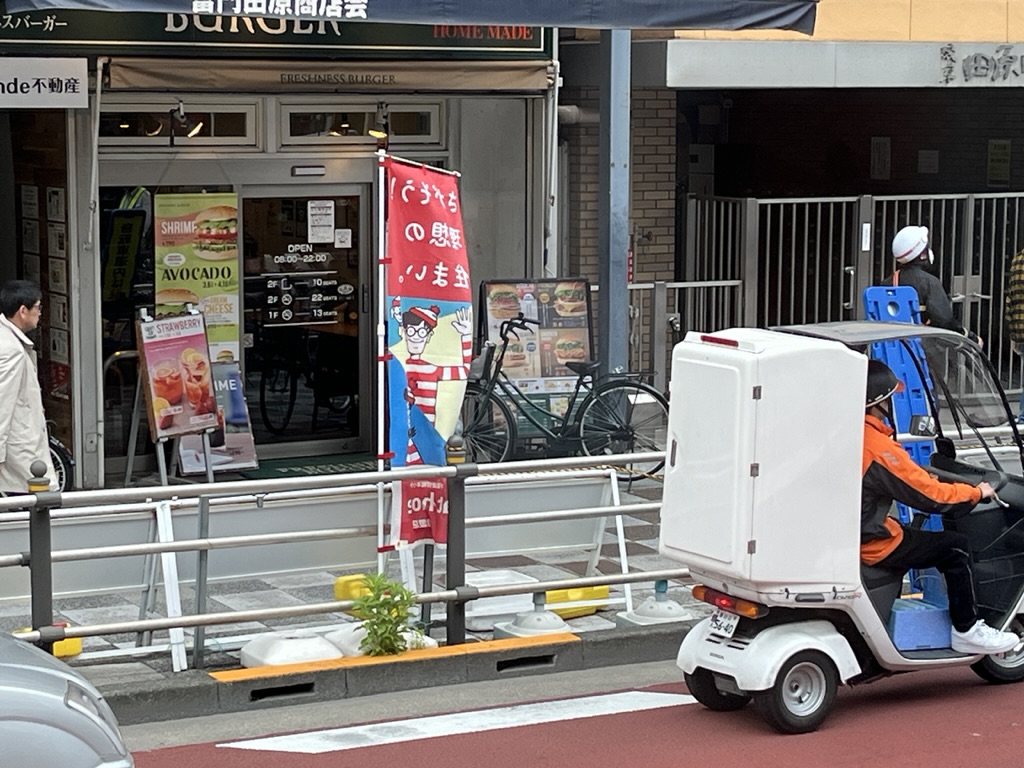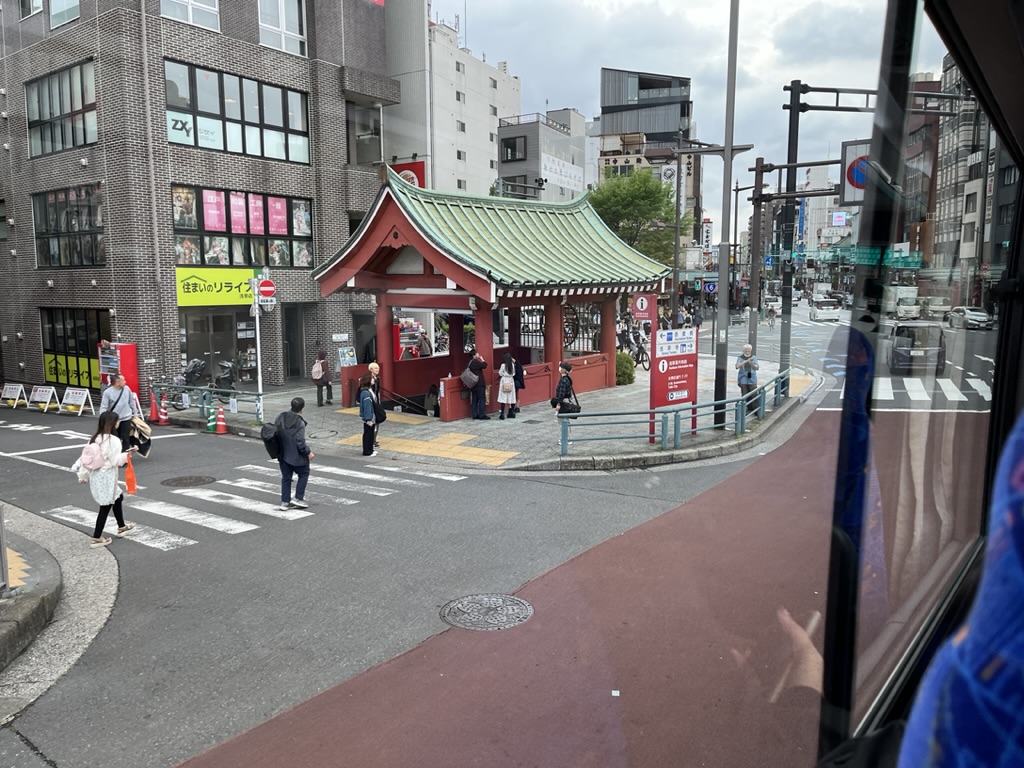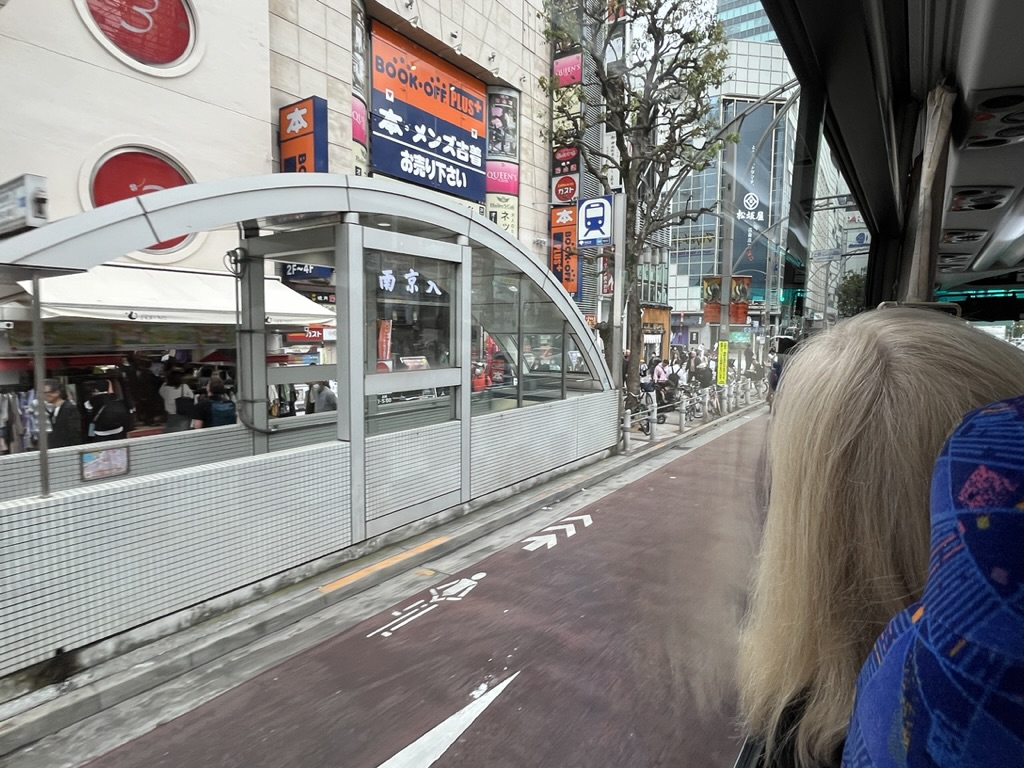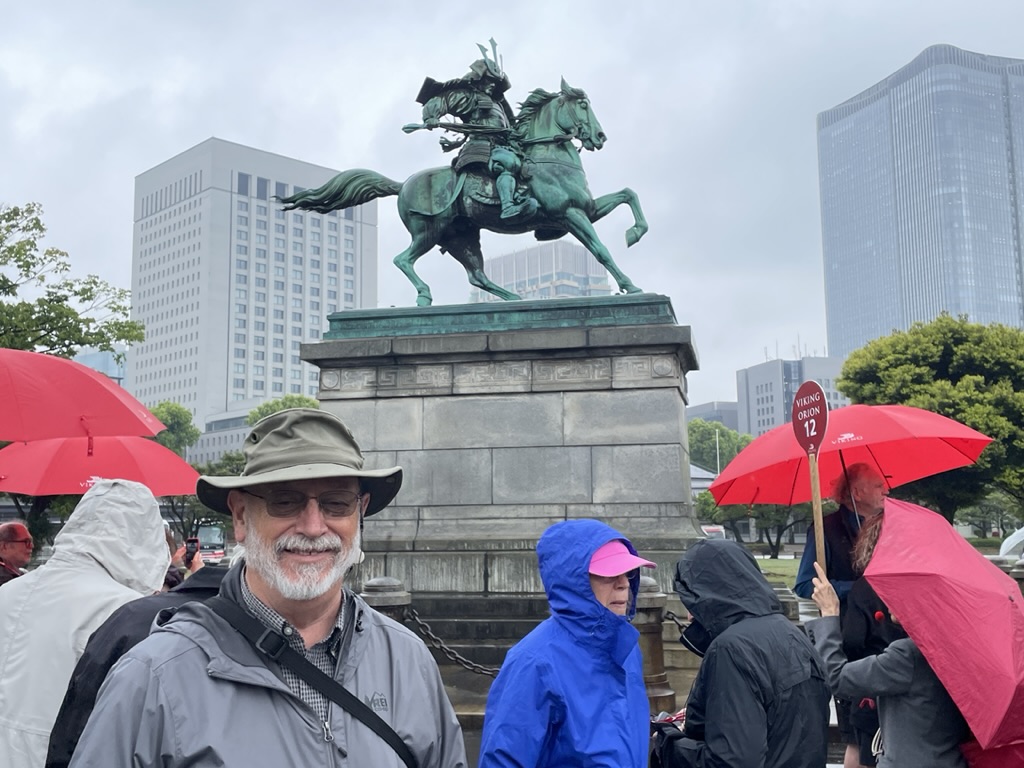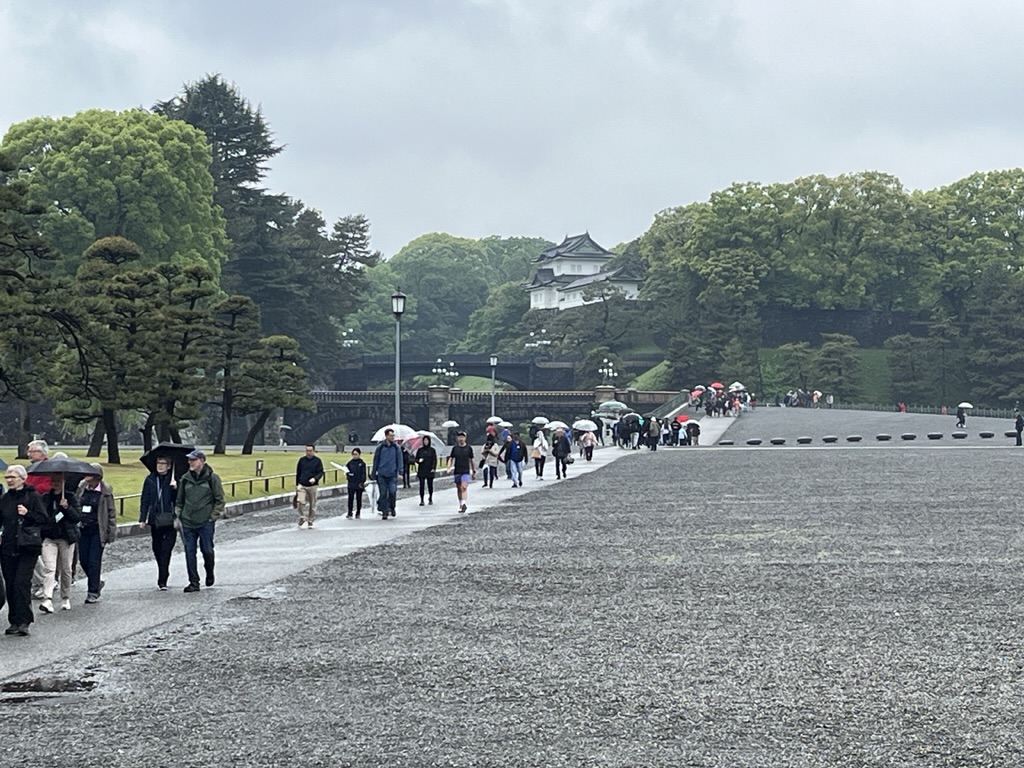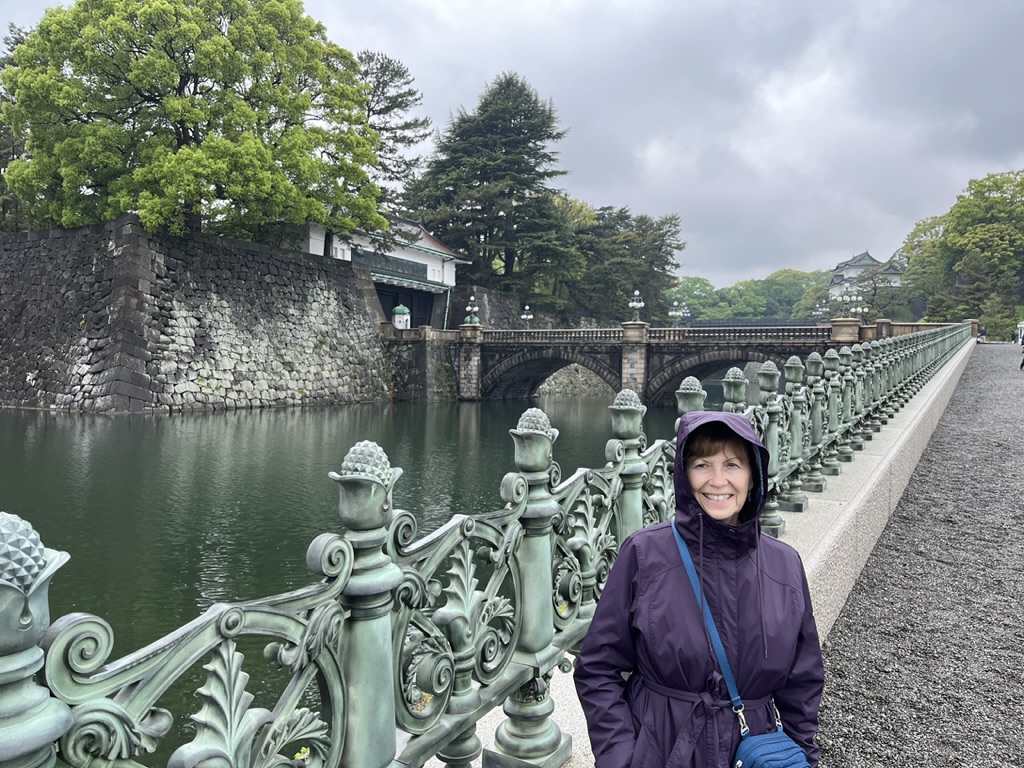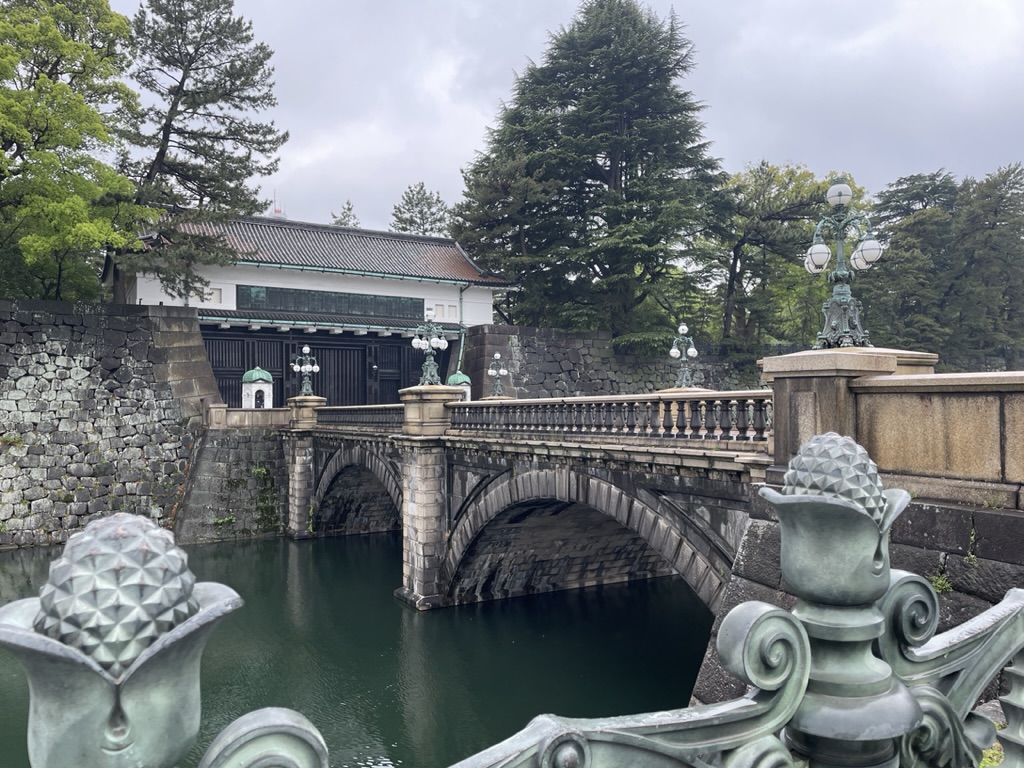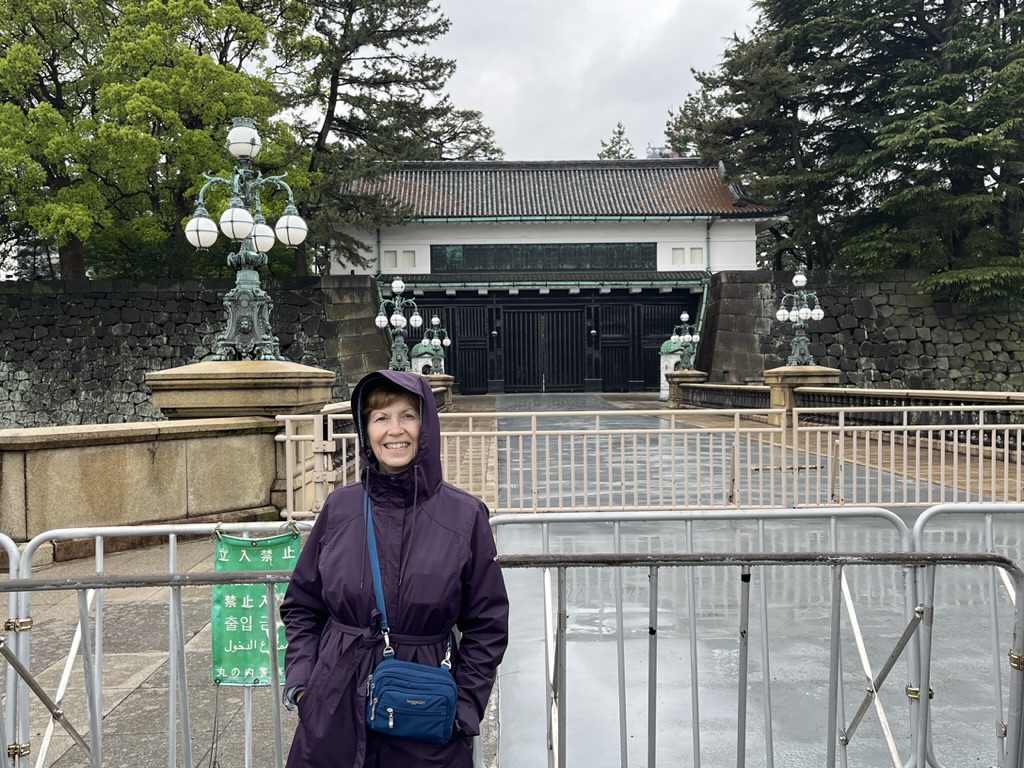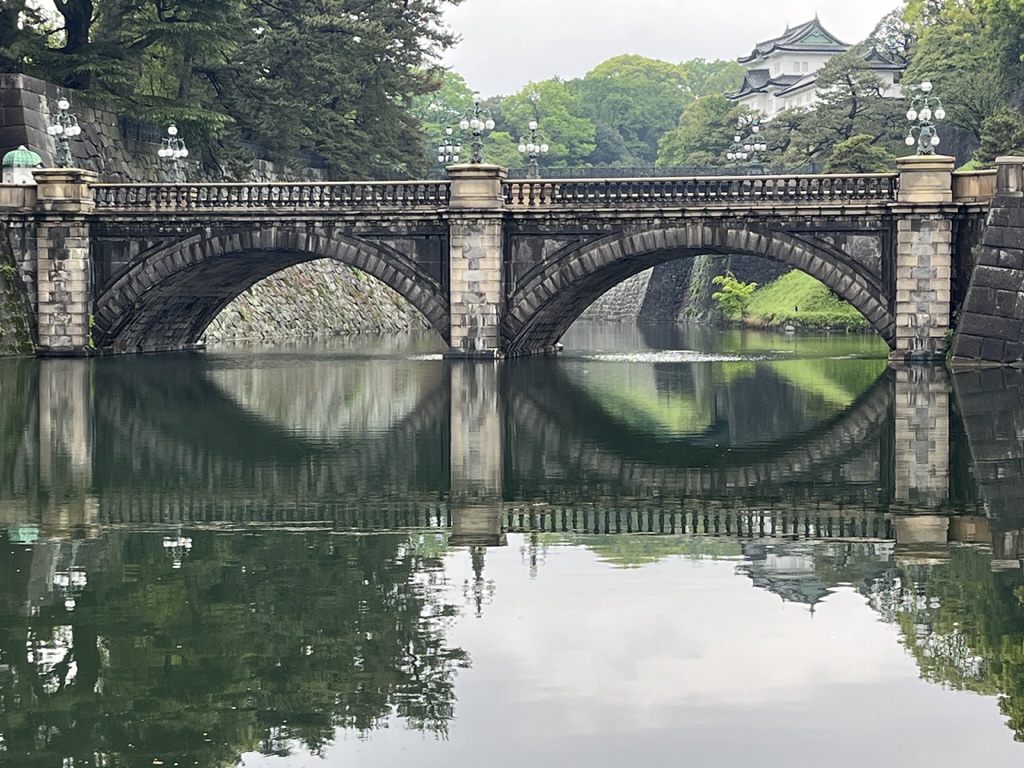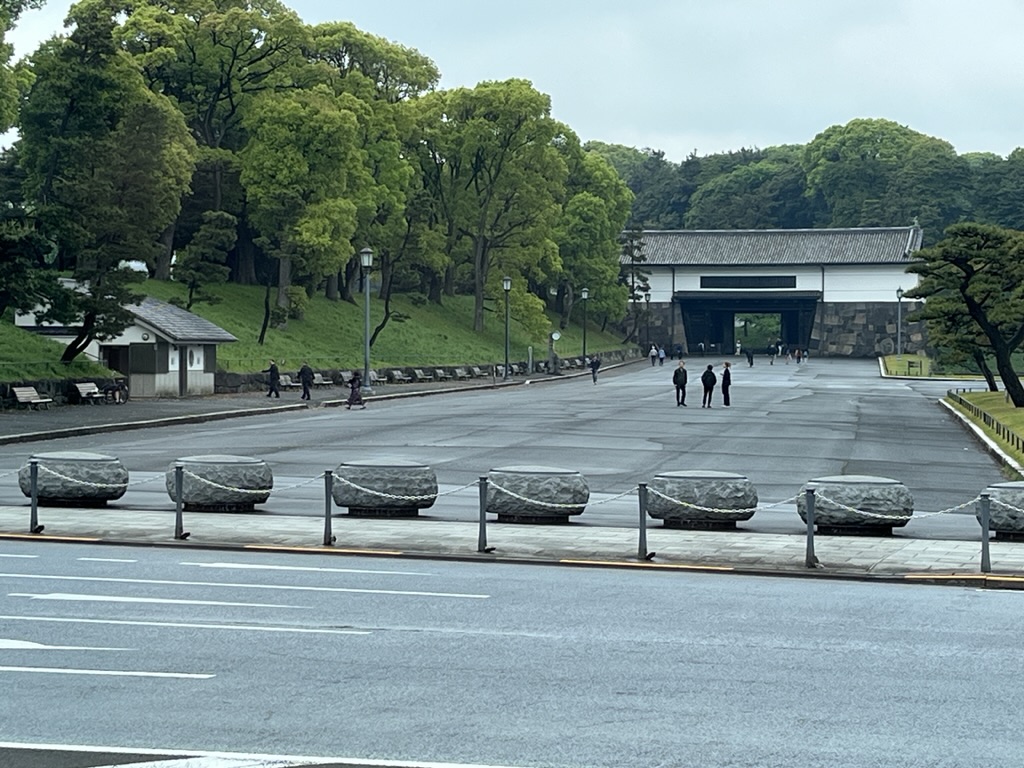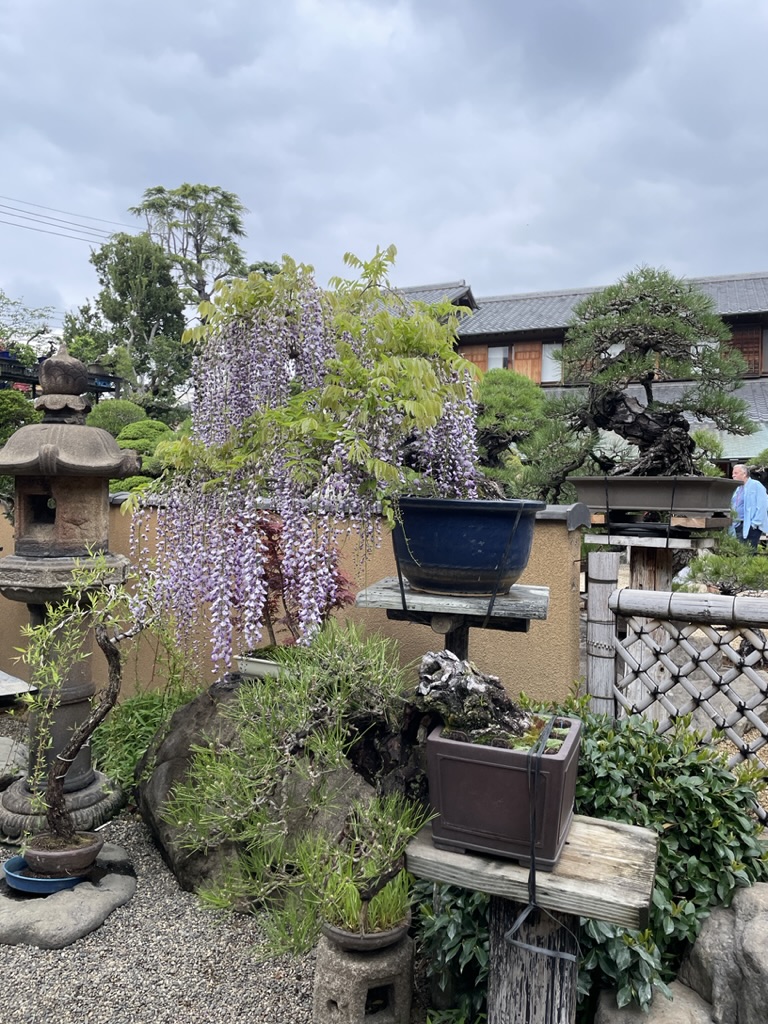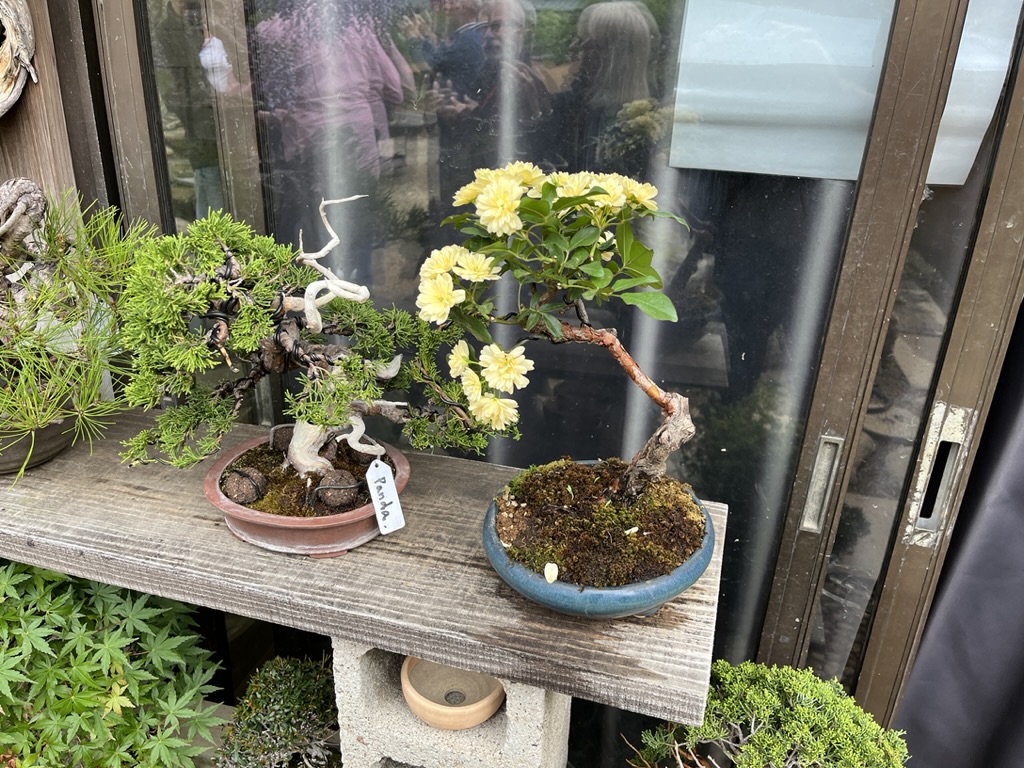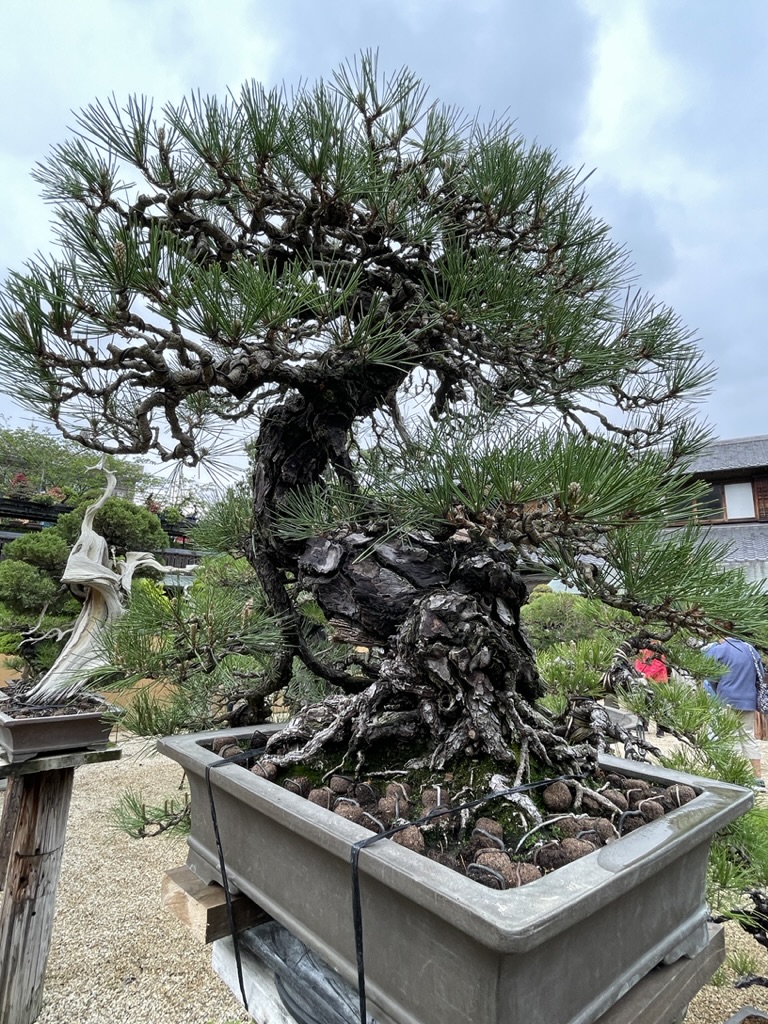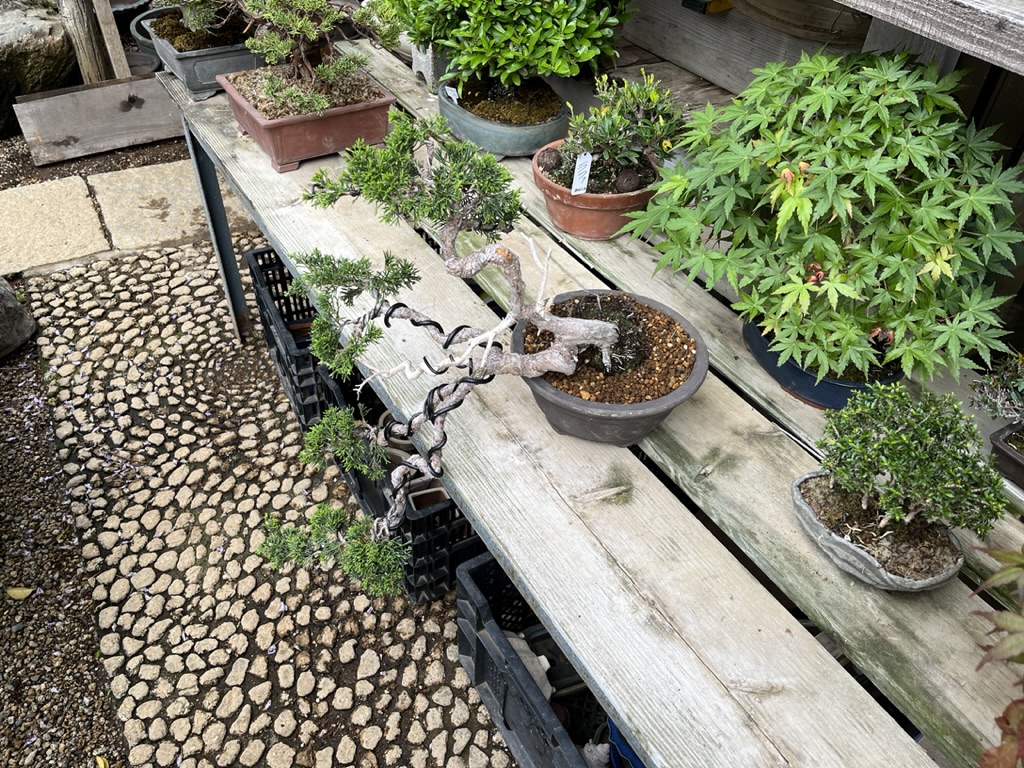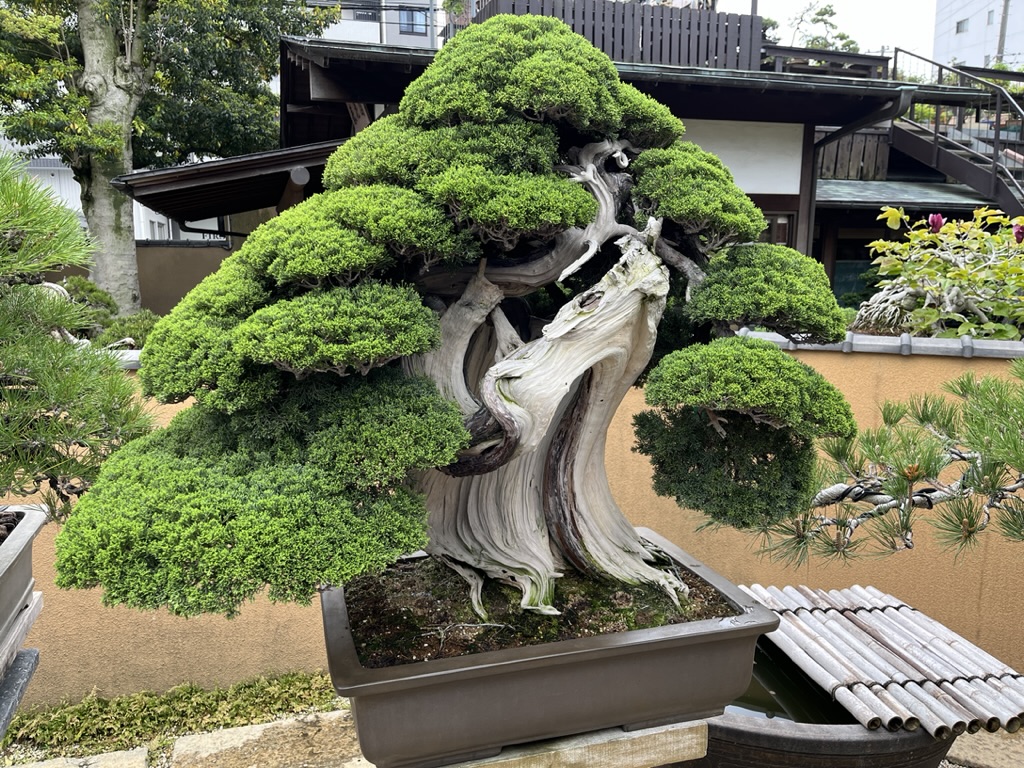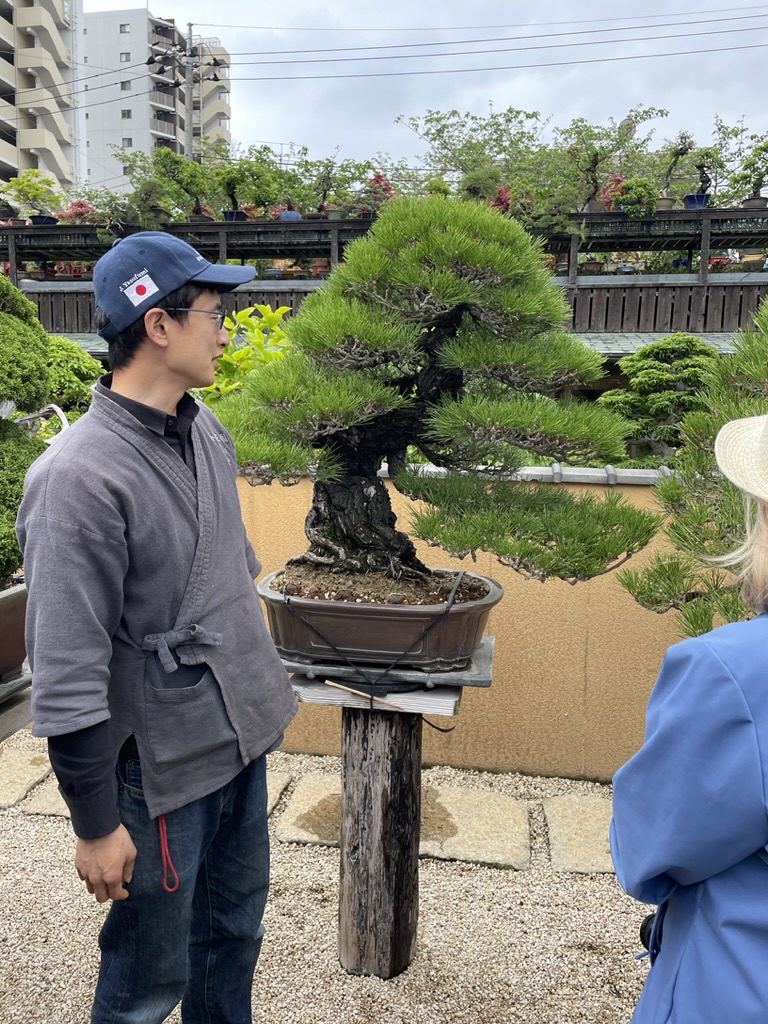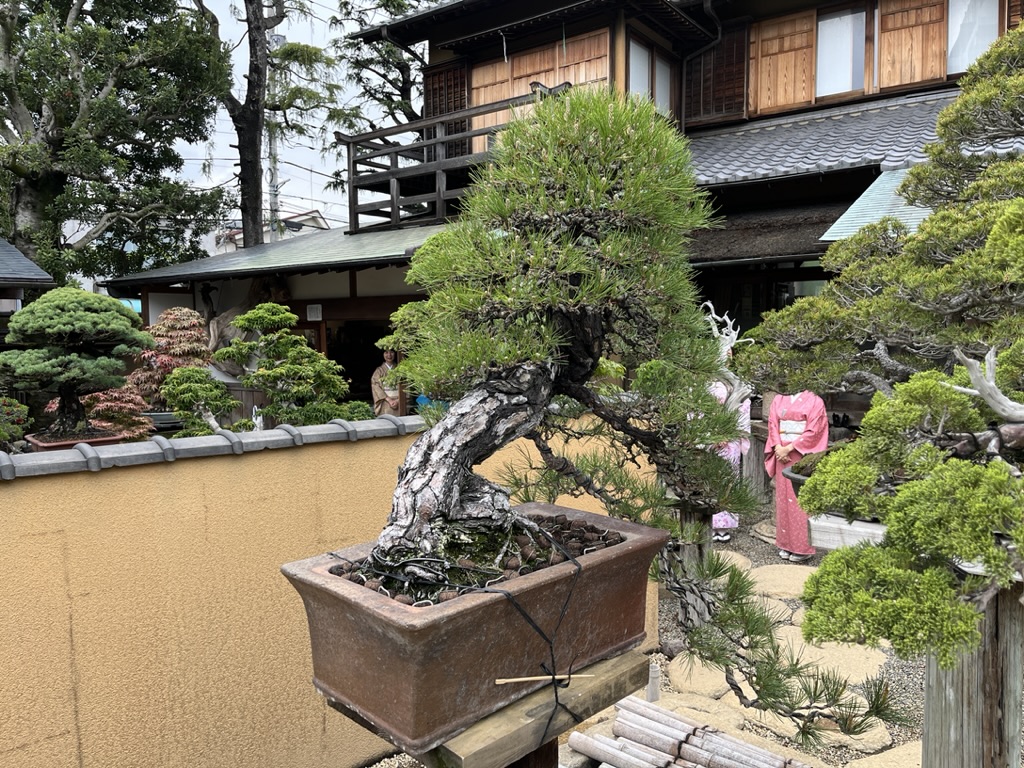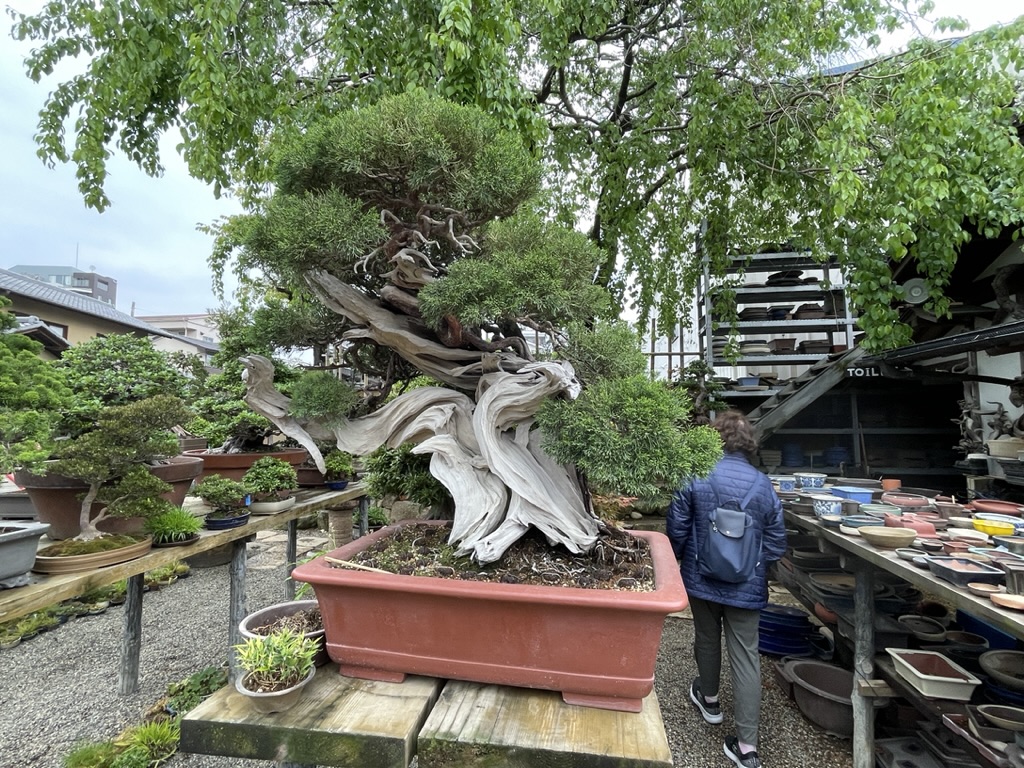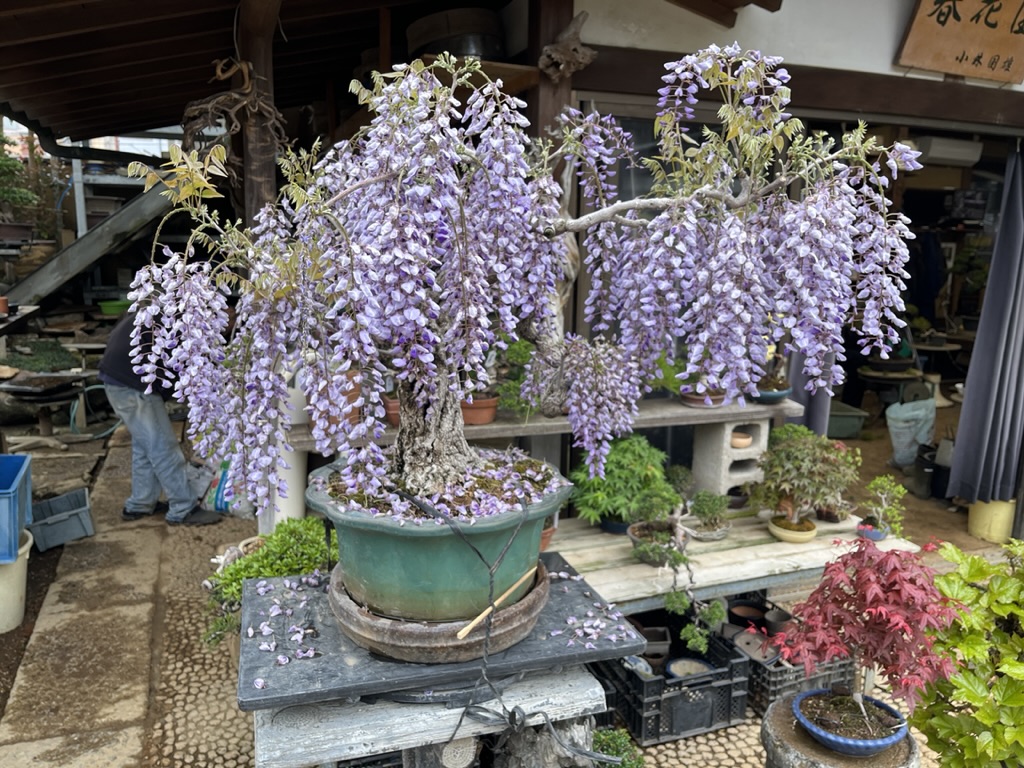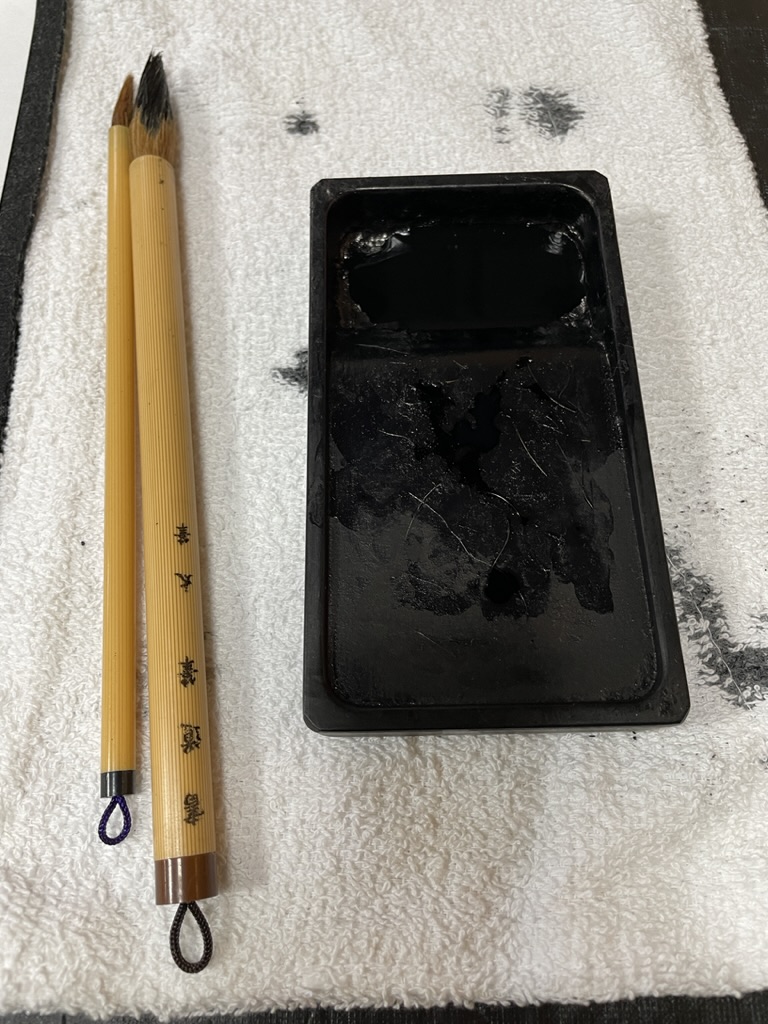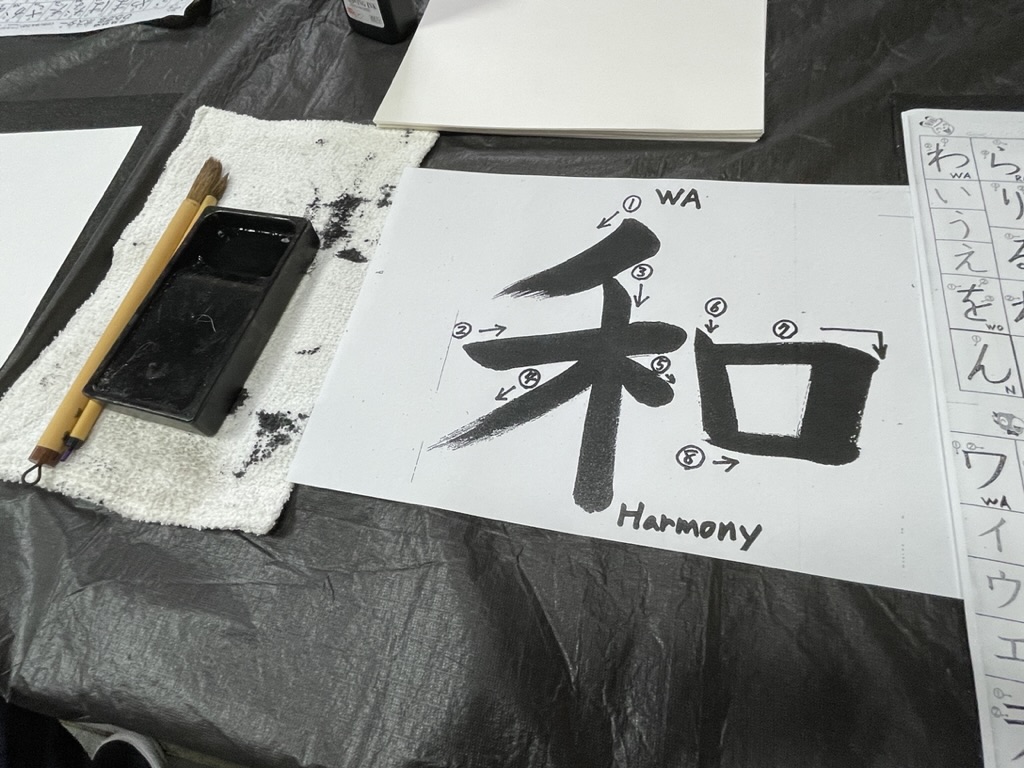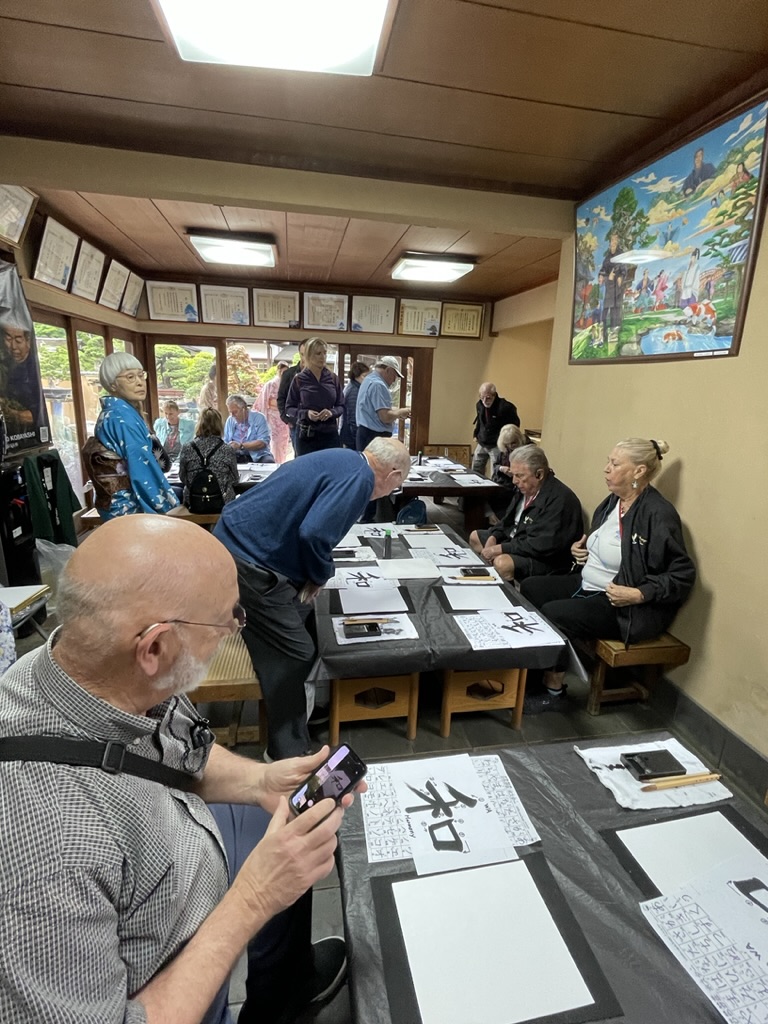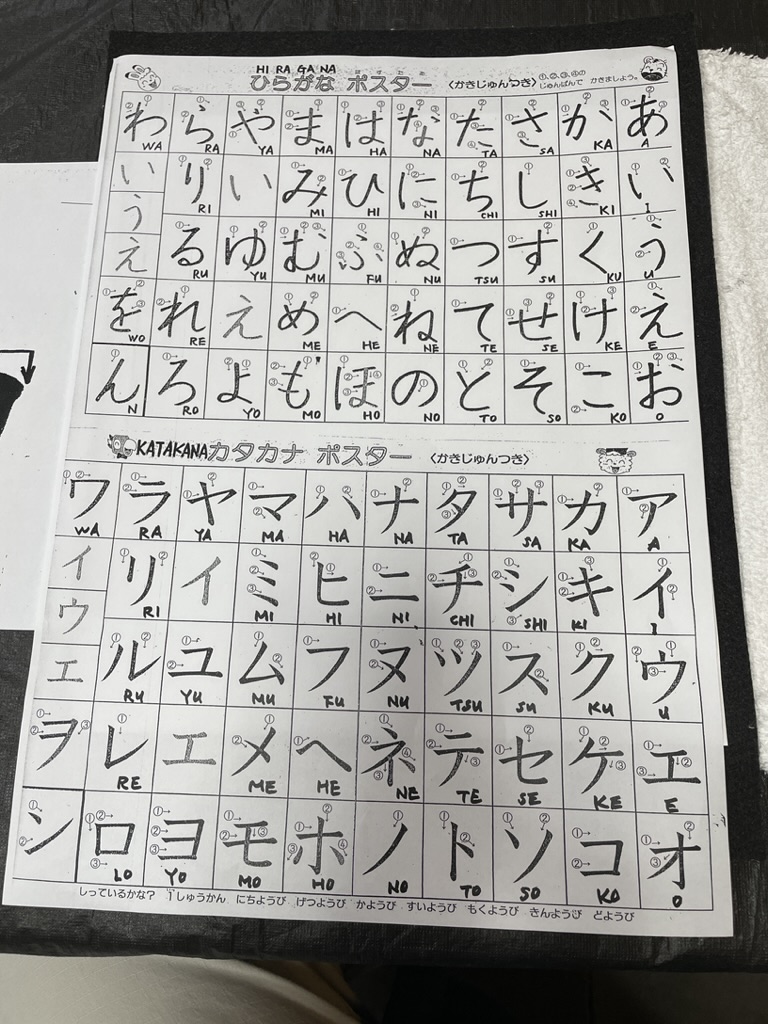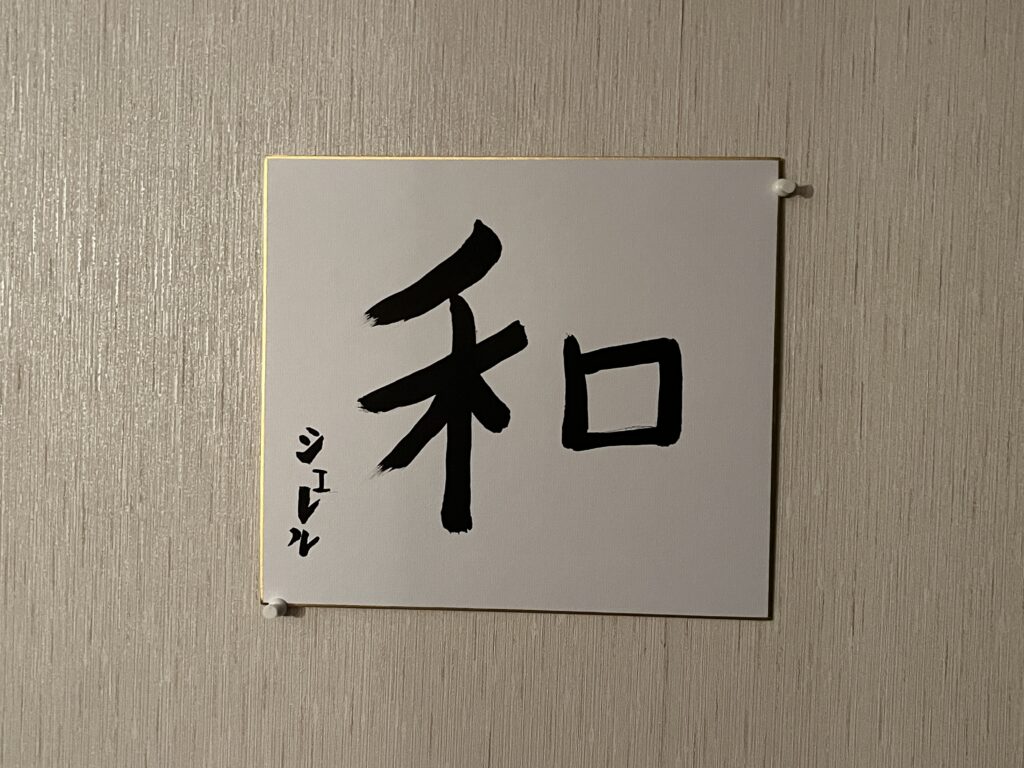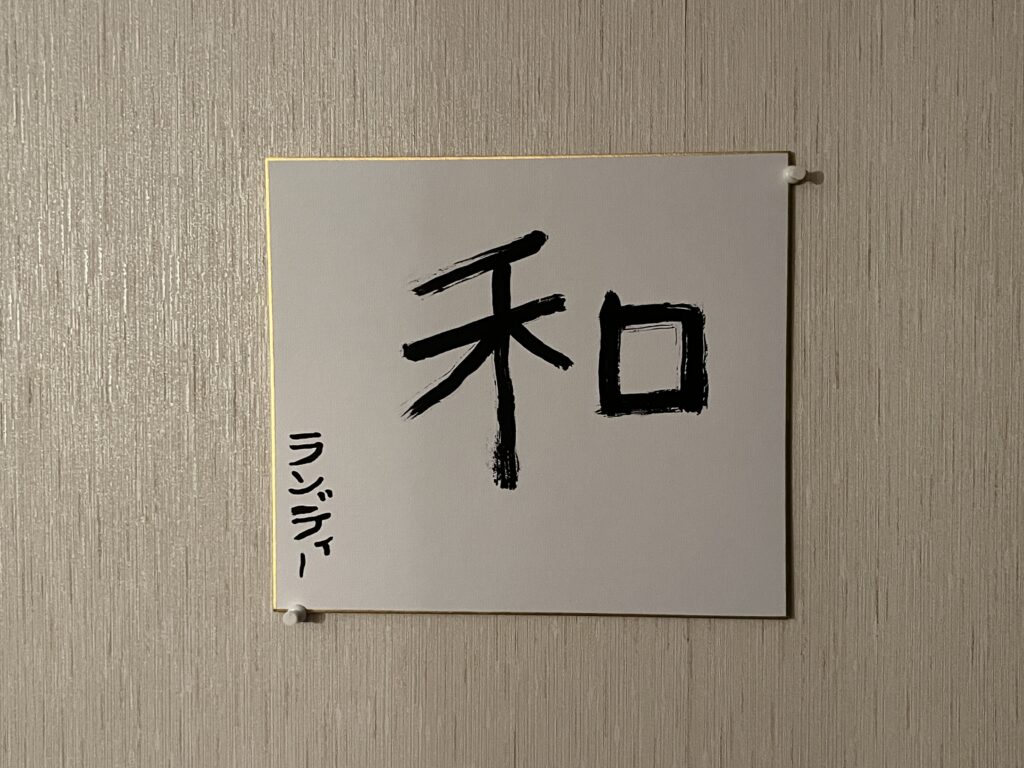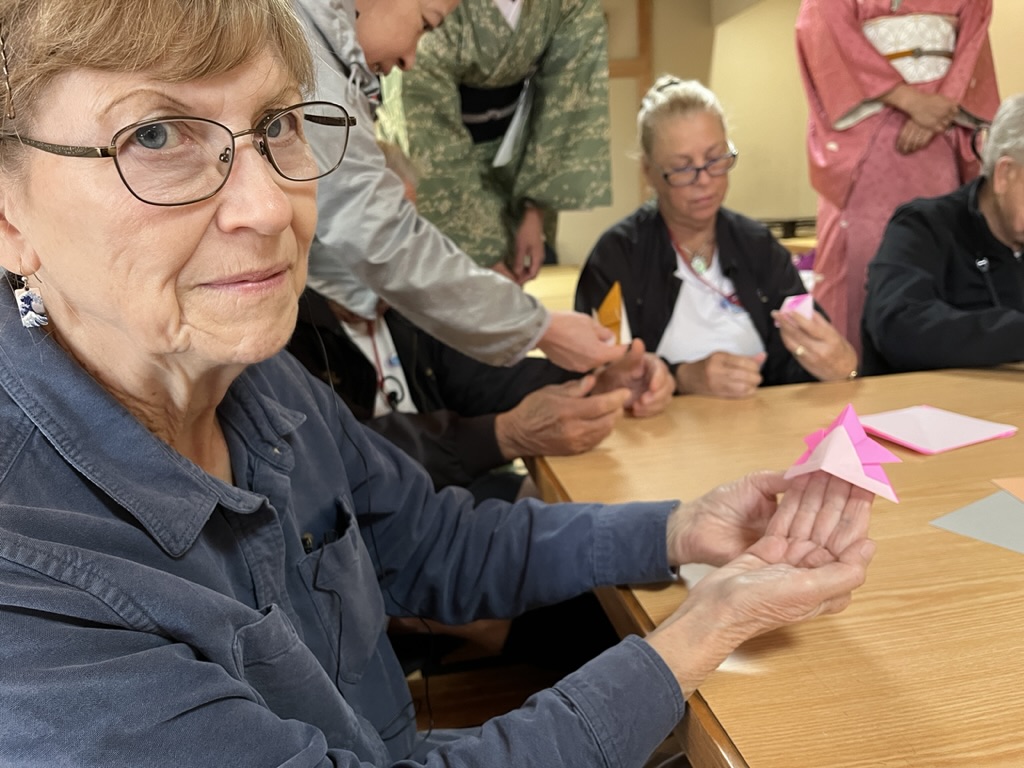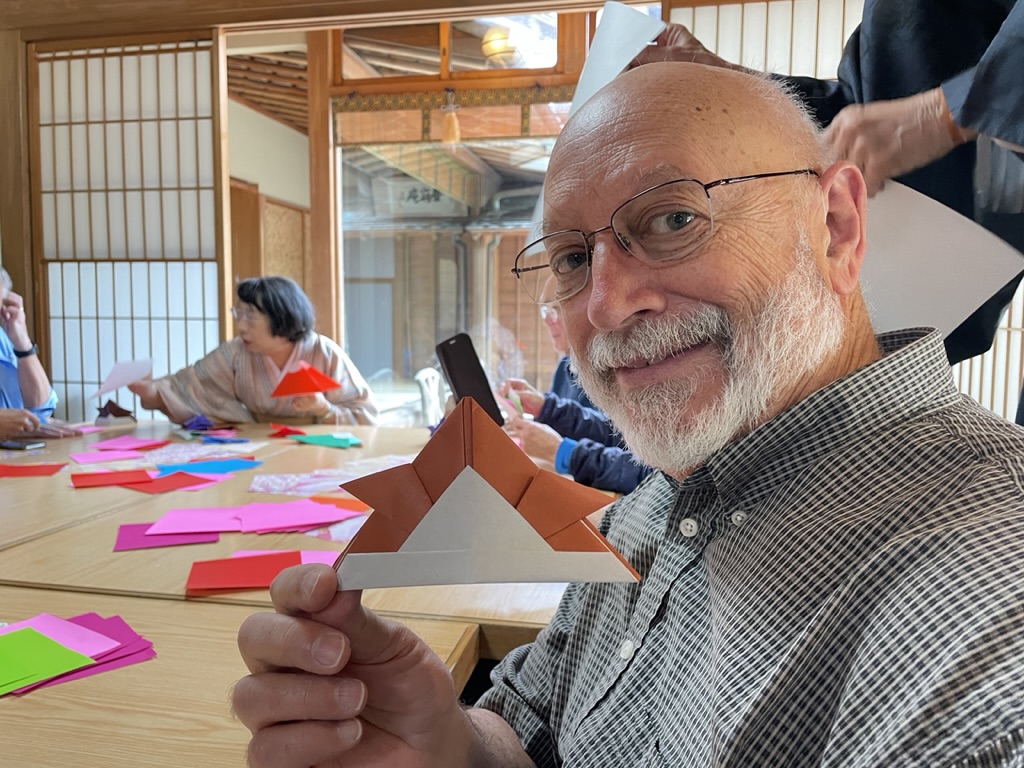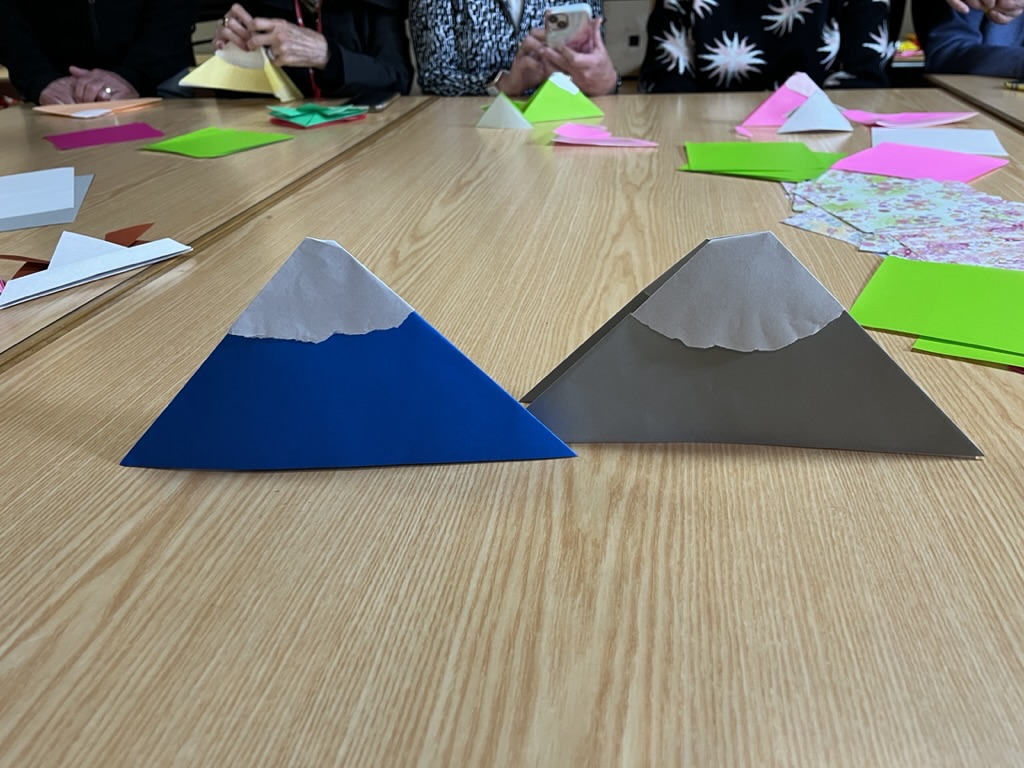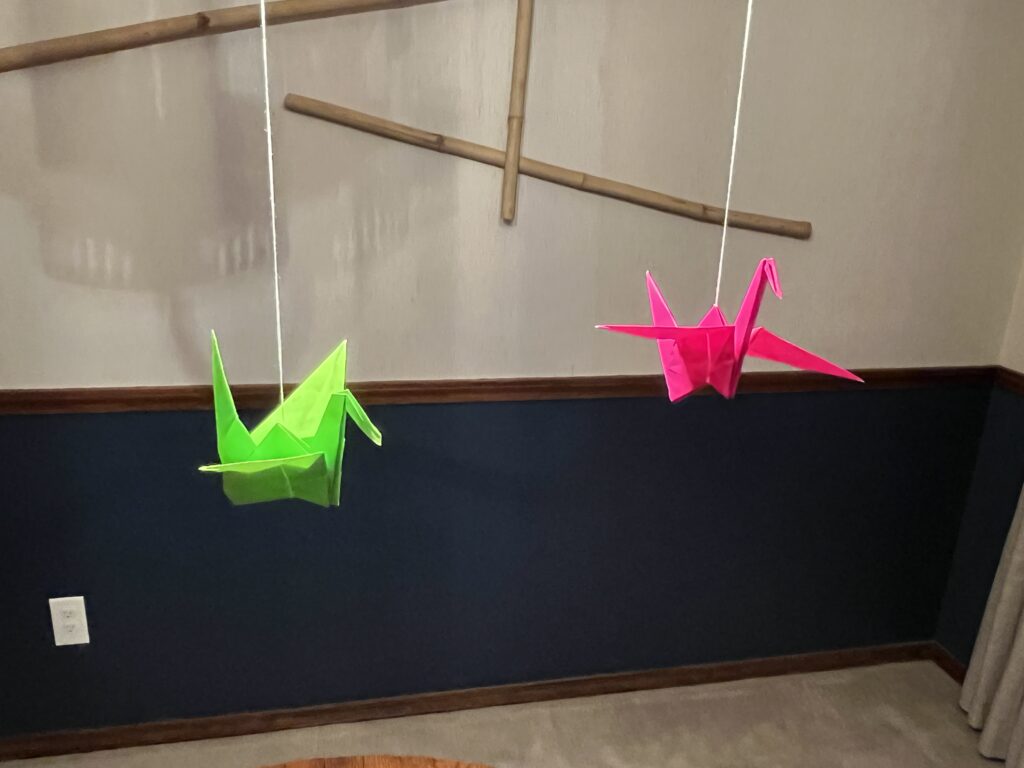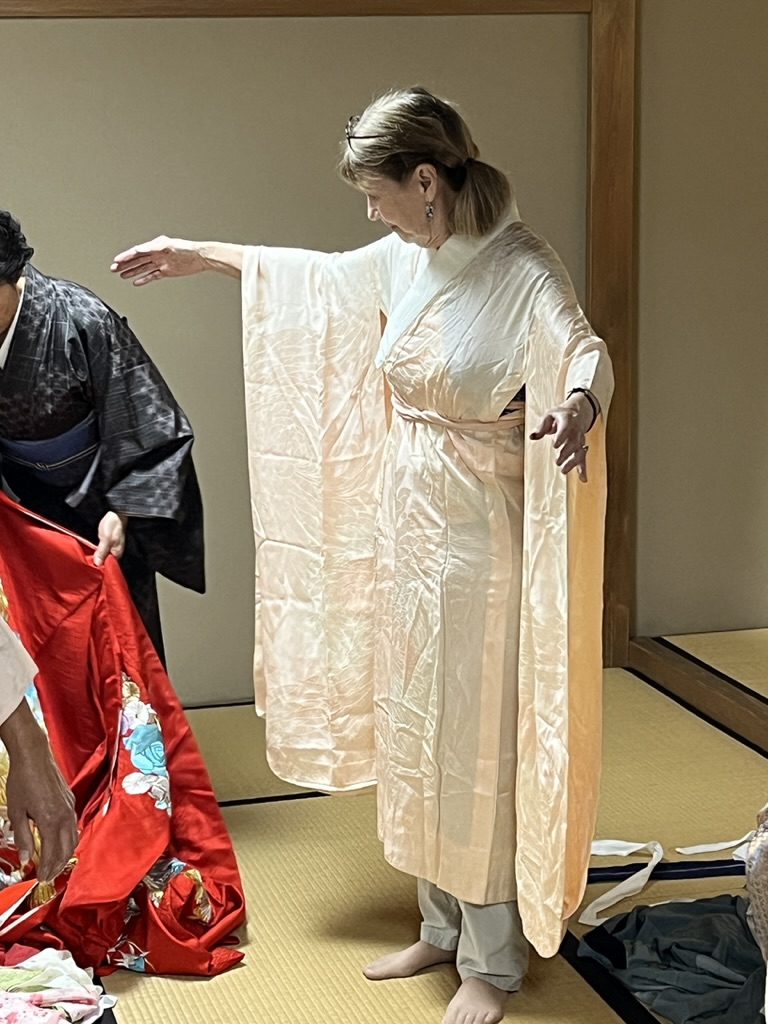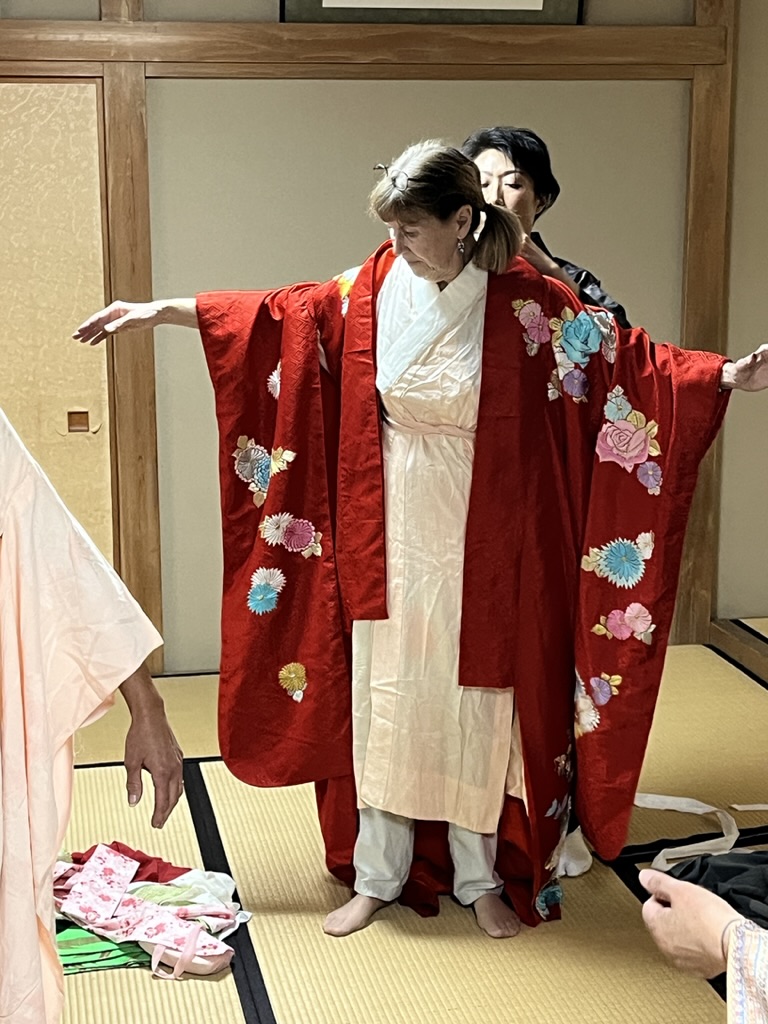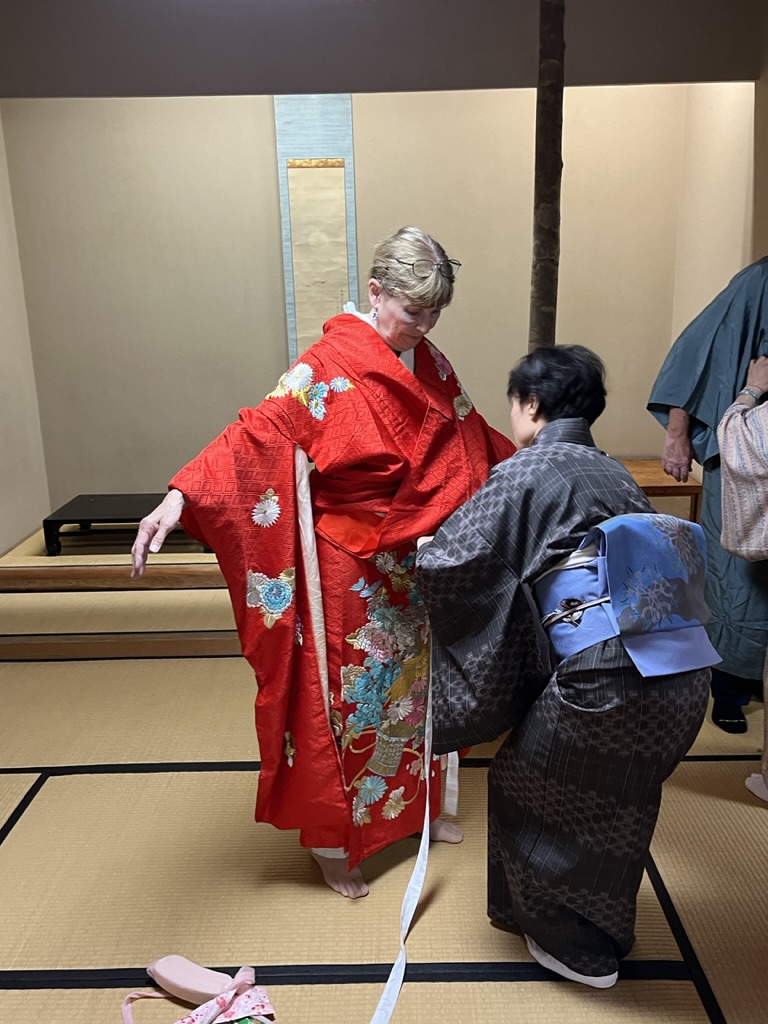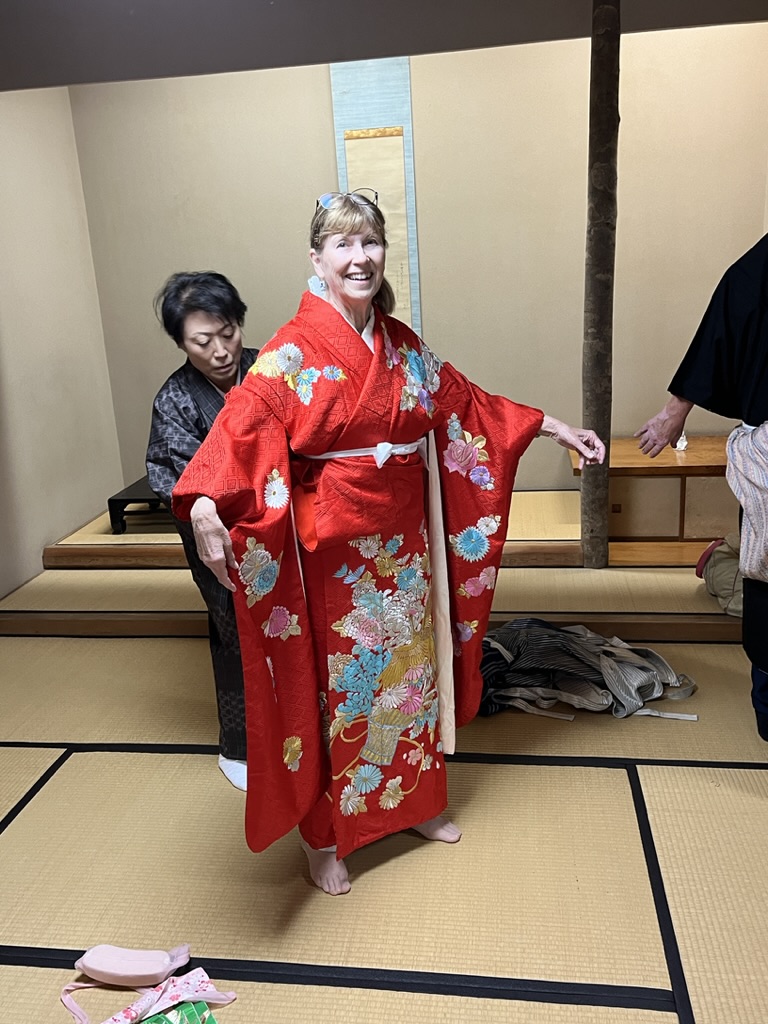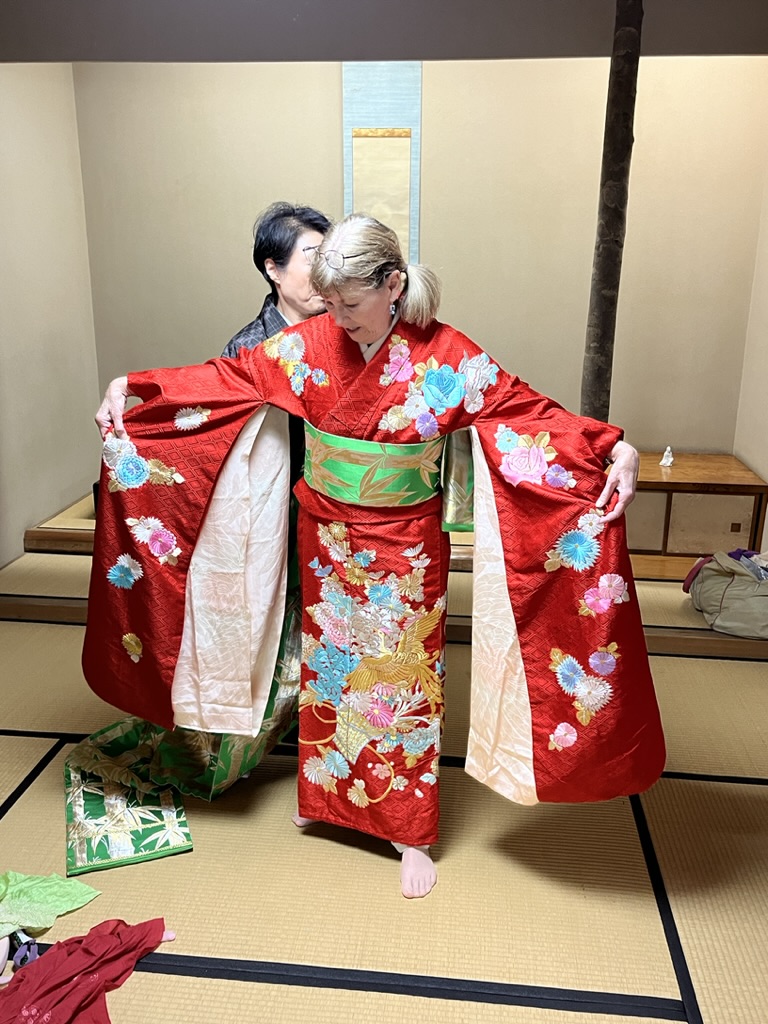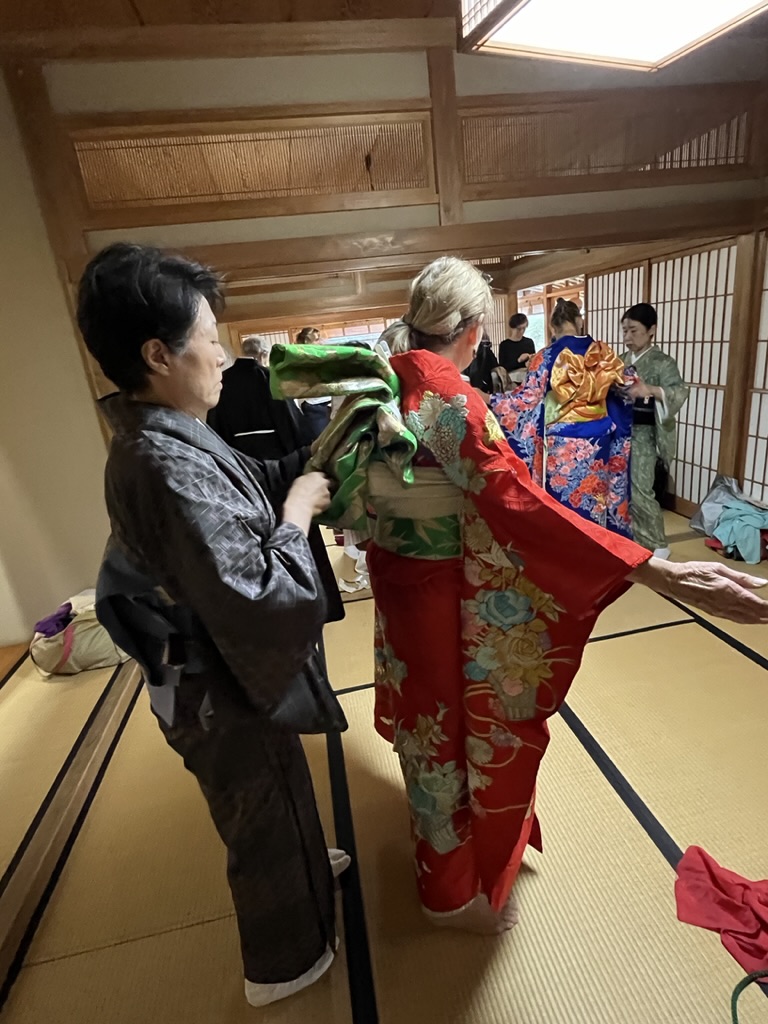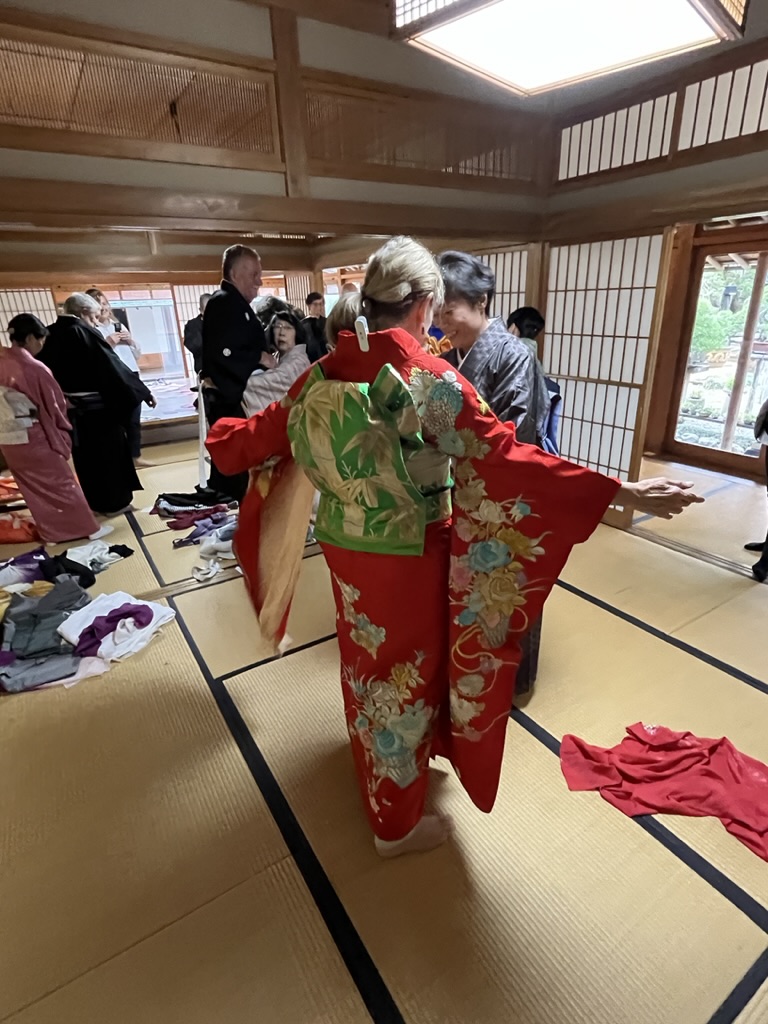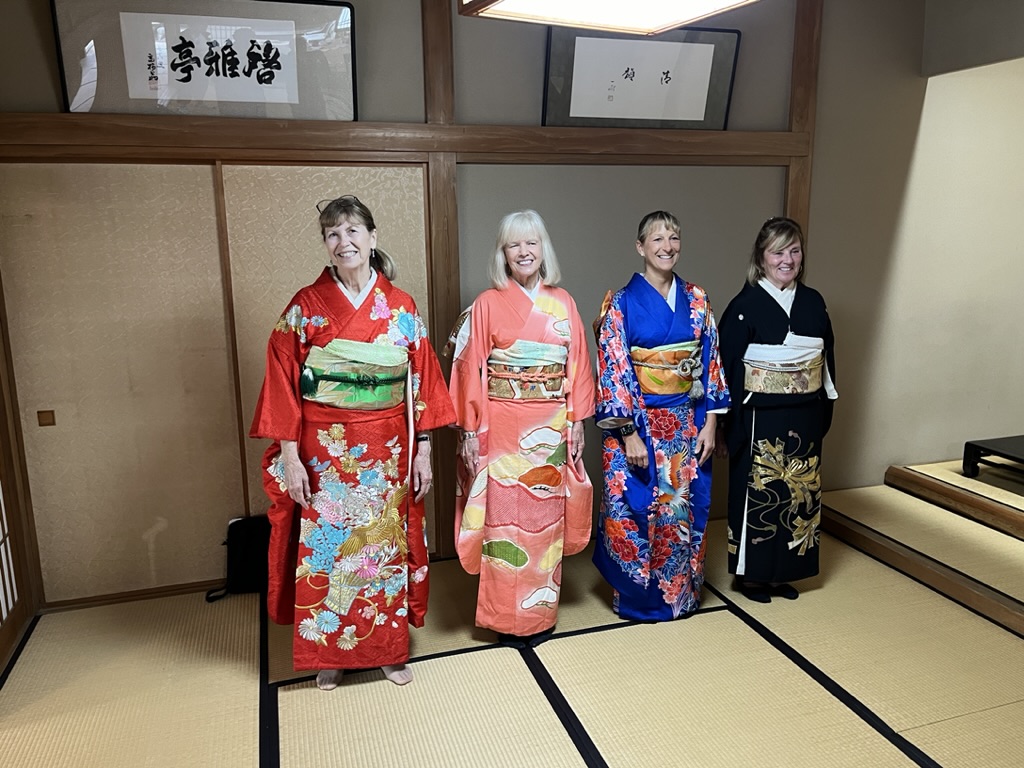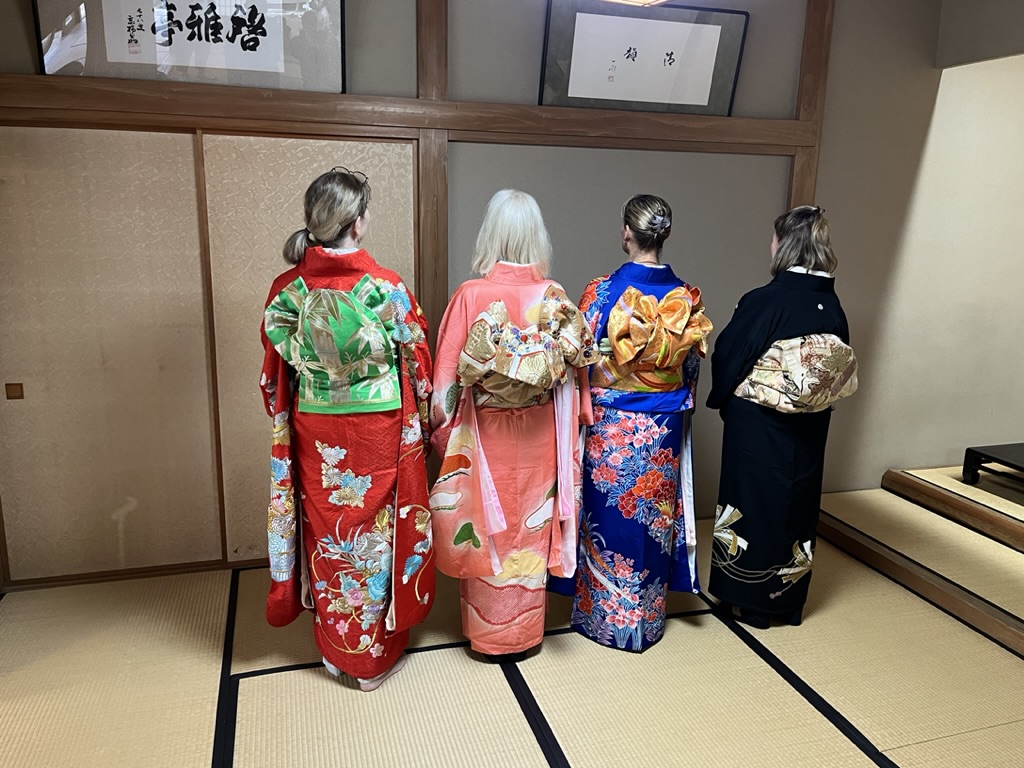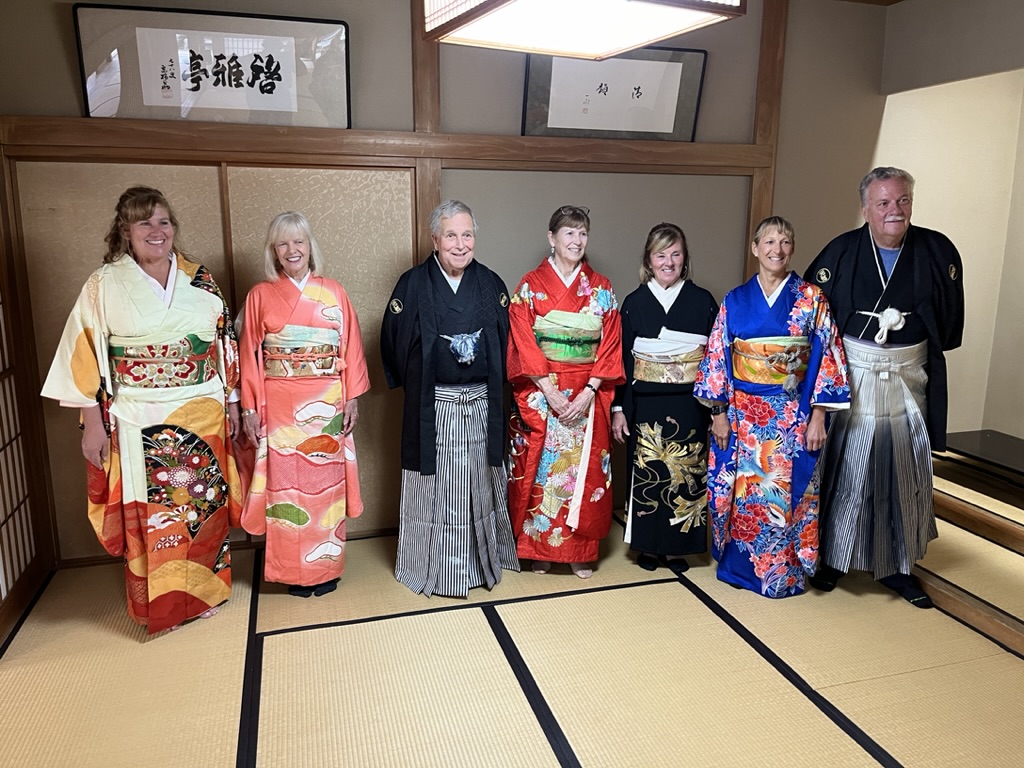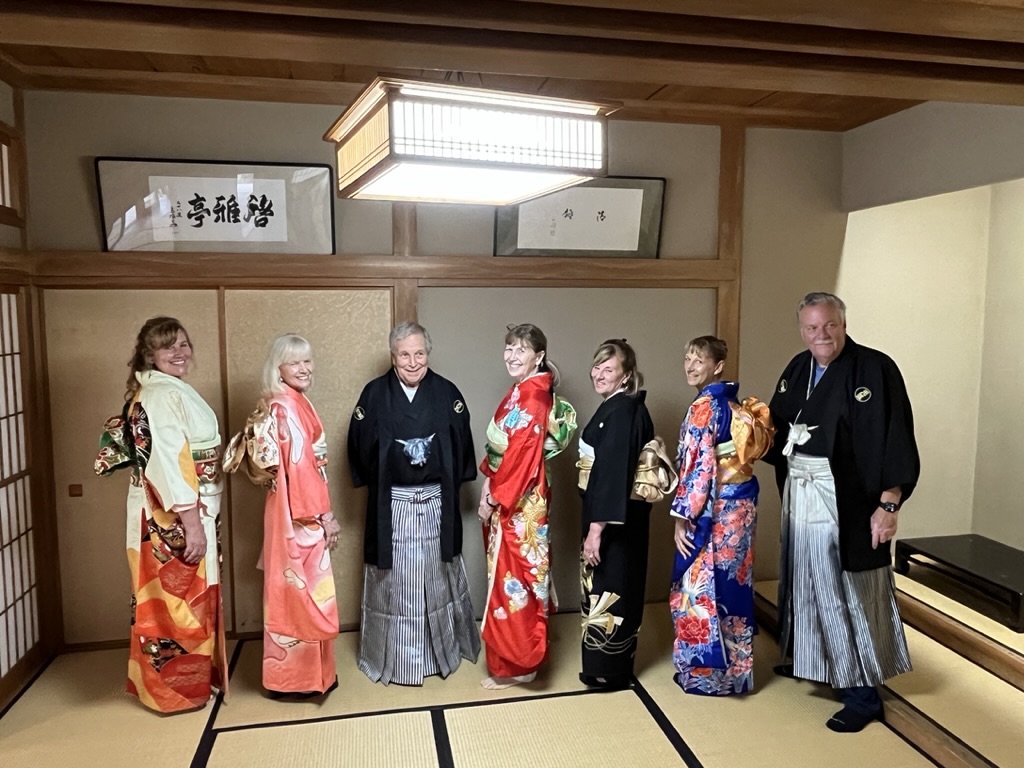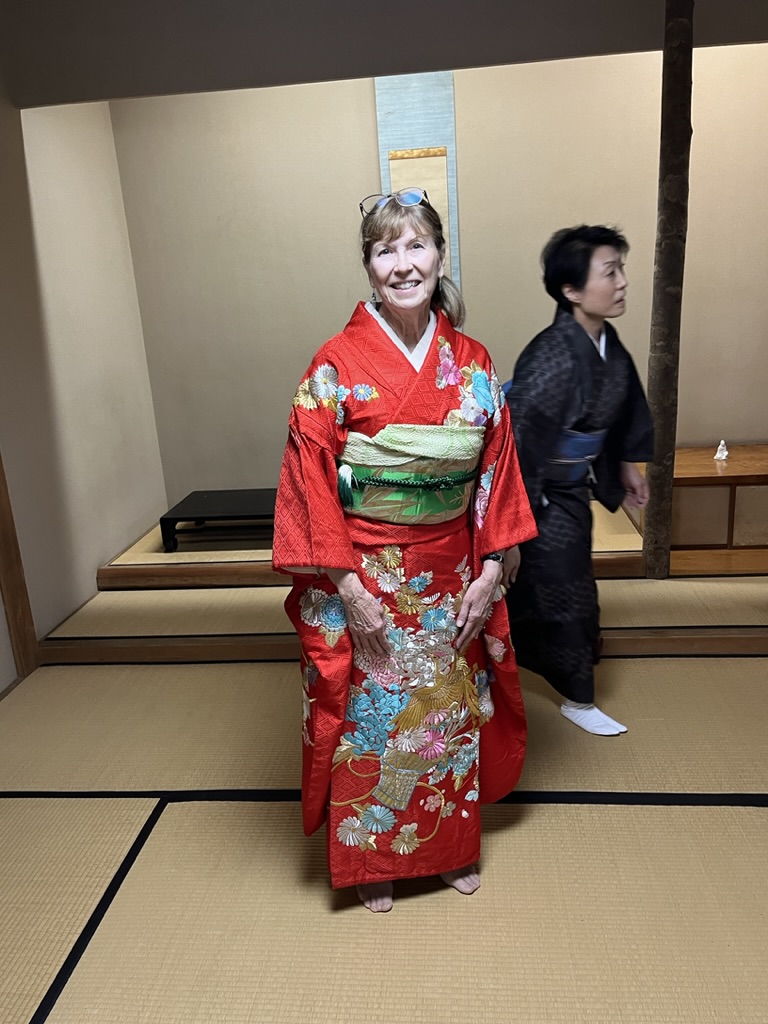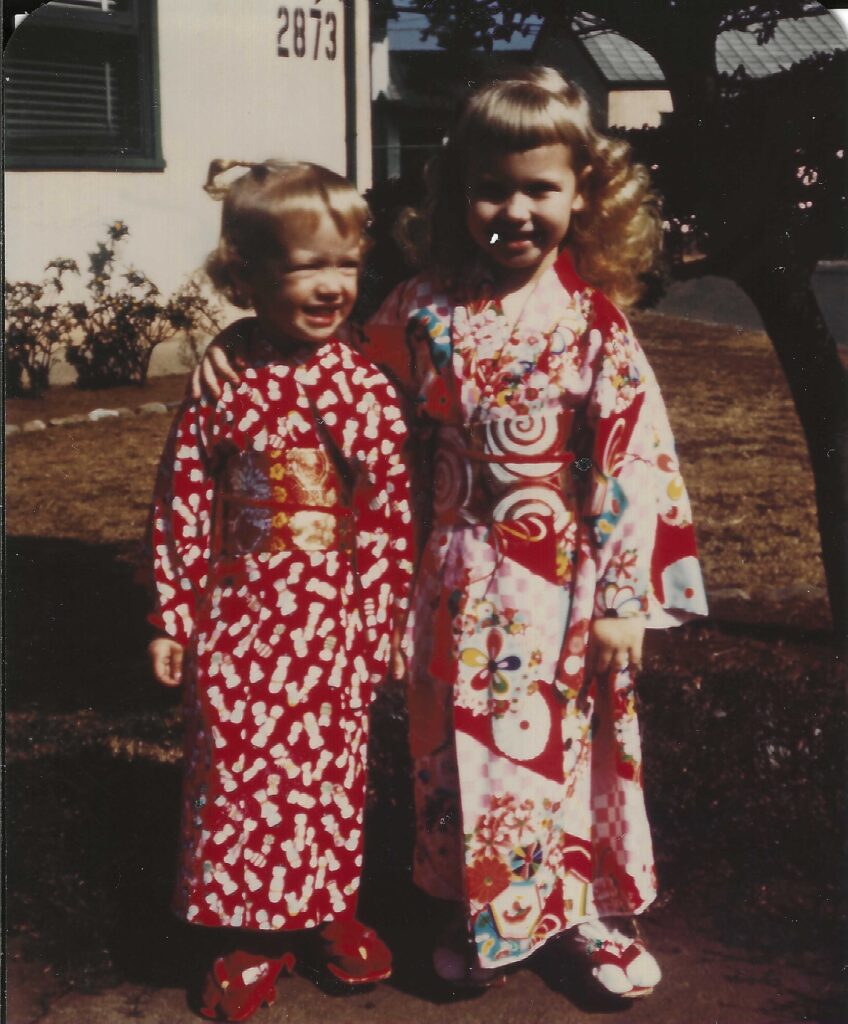Noon Report:
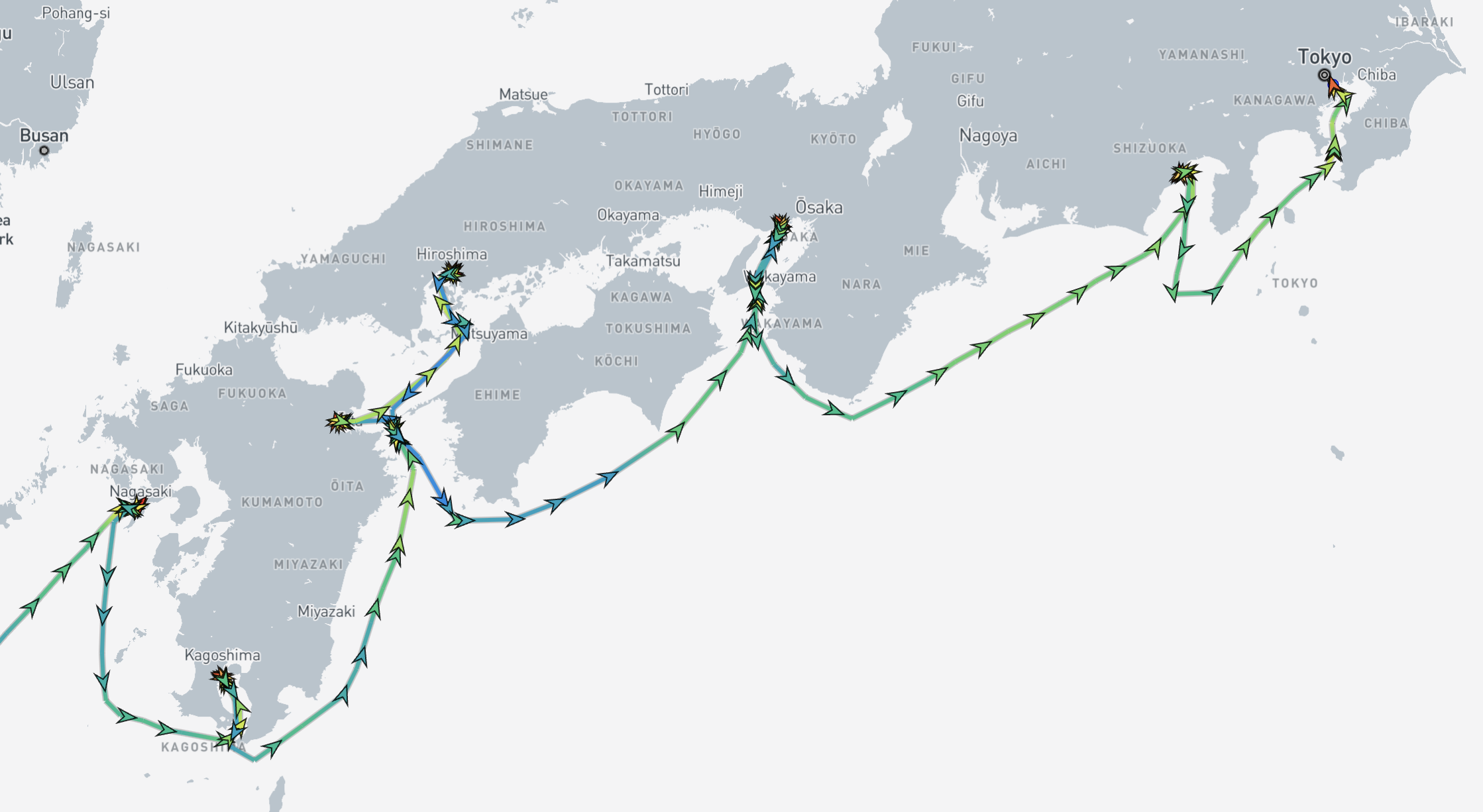
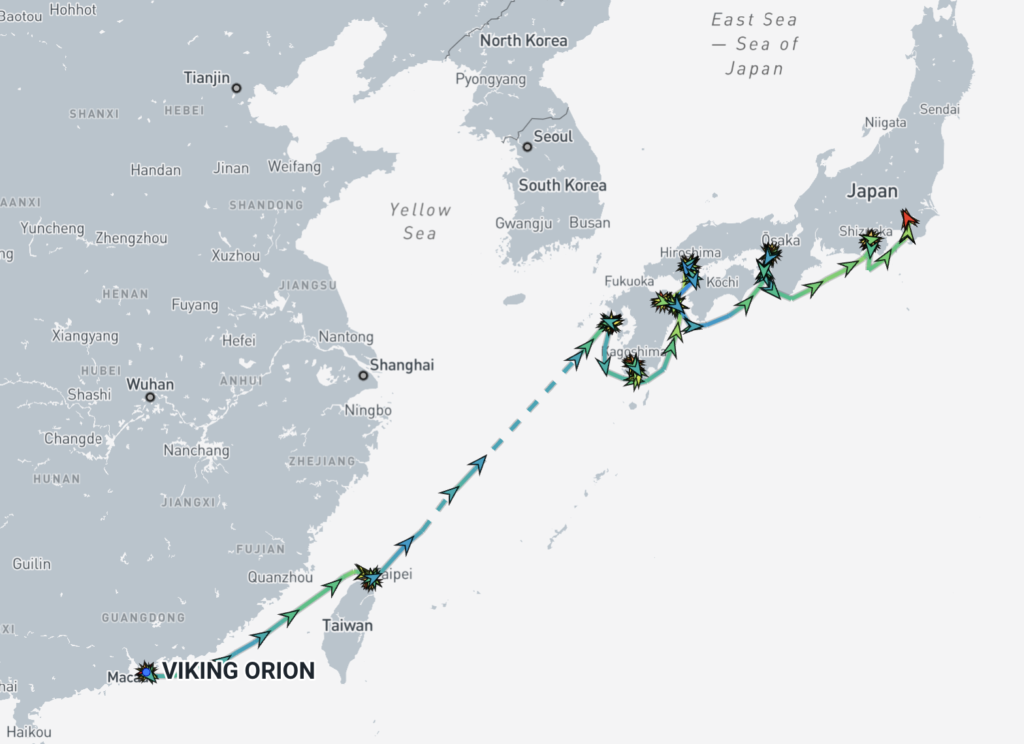
- Location: N 35° 37.07′, E 139° 46.20′
- Speed: Docked
- Course: Docked
- Weather: Overcast, Occasional Rain
- Sea: Calm
EXCURSION: Tokyo Panorama
We started the day with the “city orientation” tour – a drive thru the central sections of Tokyo while our guide pointed out various points of interest.
Emperor’s Castle
Our drive took us to the residence of the emperor. We wandered the grounds a bit enjoying the views.
Following viewing the statue, gate, bridge (and a bit of shopping time) it was back to the ship for a quick lunch (another Rekke/cookie) and hurry back to the bus for our next excursion.
EXCURSION: Traditions of Japan
We bussed across town to the Shunkaen Bonsai Museum for an afternoon of cultural activities.
Bonsai:
The museum is a working studio of Bonsai where hundreds of these beautiful creations are on display. Here are a few examples.
Additionally they have several studios where groups like ours can be instructed in traditional Japanese arts. Here’s some of what we learned.
Caligraphy:
They taught us about the ink and the brushes, how to hold the brushes, and how to make the strokes. The instructors gave us a very detailed pattern to follow to create our first character – the character for harmony.
Origami
Then it was on to Origami class where an instructor led us (very quickly) thru the creation of 3 forms.
Kimono
Our last event was the kimono dressing. Volunteers from the group were dressed in kimonos so we could all witness what a complicated process it is to wear these beautiful robes. I wasn’t selected to don a man’s outfit, but Cheryl was right there choosing the red one – to match the photo of five year old Cheryl in a similar robe.
PACKING
Then it was over.
We returned to the ship and packed.
We put our suitcases out in the hall, and went to dinner – the last one in what has become our corner of the cafe. When we finished Madelaine had disappeared (so we’ll get a photo with her in some future cruise) but Harrish our waiter/wine steward (from the Maldives) wouldn’t think of letting us go without trading contact info and getting a photo.
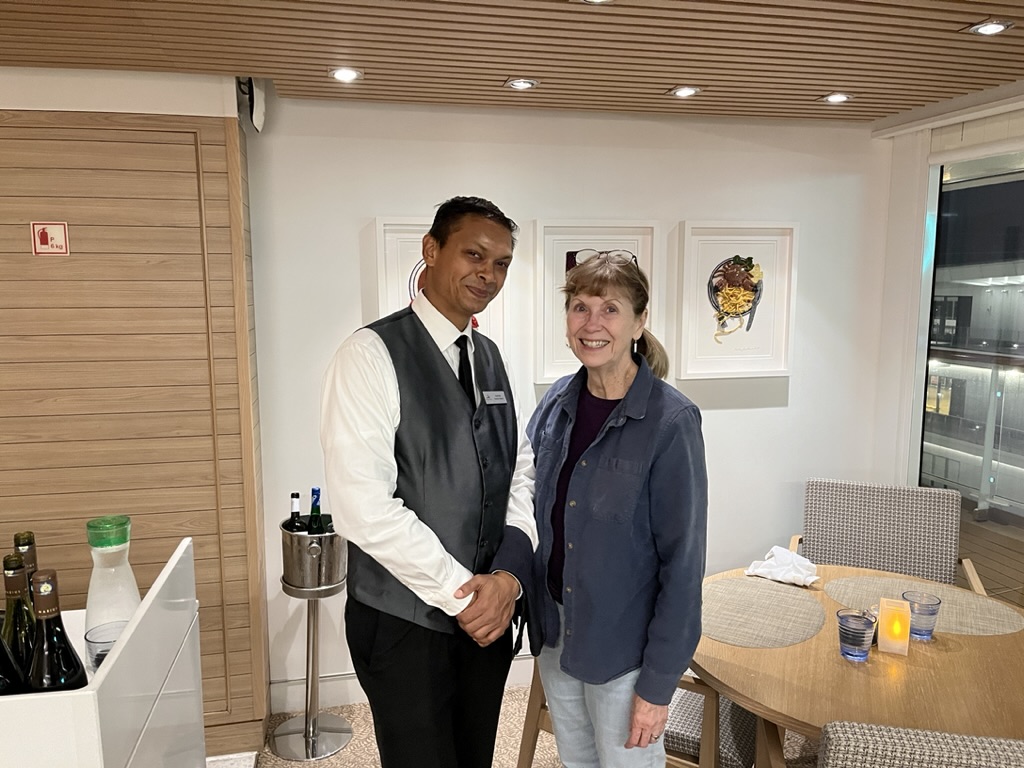
It’s been a special experience to be a member of “Harrish’s family” on this cruise.
DESTINATION PERFORMANCE: Awa Dance
The last event of the cruise was a performance by a dance team performing Awa Odori (dance). This is a form of dance performed during the Obon festival in the Tokushima Prefecture (Awa is the former name of this Prefecture). It’s an energetic dance where men and women engage in very different, but complimentary forms. Here’s a clip:
Then it was time for bed.
Tomorrow’s a very long day, but we get to spend much of it napping (or wishing we could get comfortable).
We’ll see. R
Cheryl’s factoids:
- Calligraphy: Japan has 3 writing systems – Chinese ideographs (over 3,000 of them), Hiragana, and Katakana (this is the common use one that creates sounds for a certain letter (much like English). Calligraphy is written and read from left to right and can run either horizontally (as in newspaper headlines) or vertically and from top to bottom. On our calligraphy lesson, we first were taught the Chinese character for “Harmony” using the big bold ink brush, then you signed your name (in the Katakana script) on the left side using the little ink brush to make it look delicate. The instructors had a hard time finding appropriate “letters” for the “r” sounds in Randy and Cheryl as Japanese uses an l or dhh sound in stead of an rrr sound.
- Bonsai: This was developed in China and spread to Japan 1,000 years ago.
- Origami: Folding the paper crane is trickier than you think – but if you do it right then you can make the wings flap by holding the “chest” paper in one hand and pulling gently on the “tail” paper with the other.
- Kimonos: I really wanted to do this as we lived in Japan (my dad was stationed at the Tachikawa Air Force Base during the Korean War) from when I was 3 until I was 5 years old and have a picture of myself as a child wearing a kimono, obi (our children obis had little bells that tinkled when we walked), tabi socks (one big toe, the other toes nestled together-fits in the zori which has a strap between the big toe and all the rest), and zoris (the flat sandals – the ones up on wooden blocks under the front and back of the foot are called “getas” and are usually worn in wet or muddy conditions). I picked the bright red kimono to match the one I had worn as a child, not realizing this is a wedding dress (the black one is for the mother of the bride). I noticed that most of the ladies that we see are wearing kimonos that are not brightly colored – maybe only the Geishas wear the bright ones. Also the skirt is tightly bound around you so you can’t take long strides, just little steps. You can’t dress yourself into a kimono since it requires tying many ropes and strings to hold everything together, plus wrapping and arranging the obi – some look like wings, others like flowers or boxes. People go to a professional kimono school to learn how to do this.
- Girls can still become Geishas but must apply to one of the Geisha Houses when they are at least 15 years old. While they are apprentices at the house – learning dance, how to play the shamisen or other instruments, and how to entertain, the mistress of the house pays for all their food and clothing. Once they are hired as entertainers they have to pay the mistress back. Girls can no longer be sold to the Geisha houses as servant/apprentices and prostitution is now illegal. As a Geisha you try to attract a wealthy patron or get married – if you’re older than 20 you can become an accompanist for a house and/or a professional dresser for kimono wearers, or if you have made a lot of money, a mistress of your own Geisha house. The professional Geisha wears a very long colorful kimono with long sleeves, long obi, and elaborate hairdo. The apprentice and /or older (helper) geishas wear short sleeved kimonos and plainly tied obis.
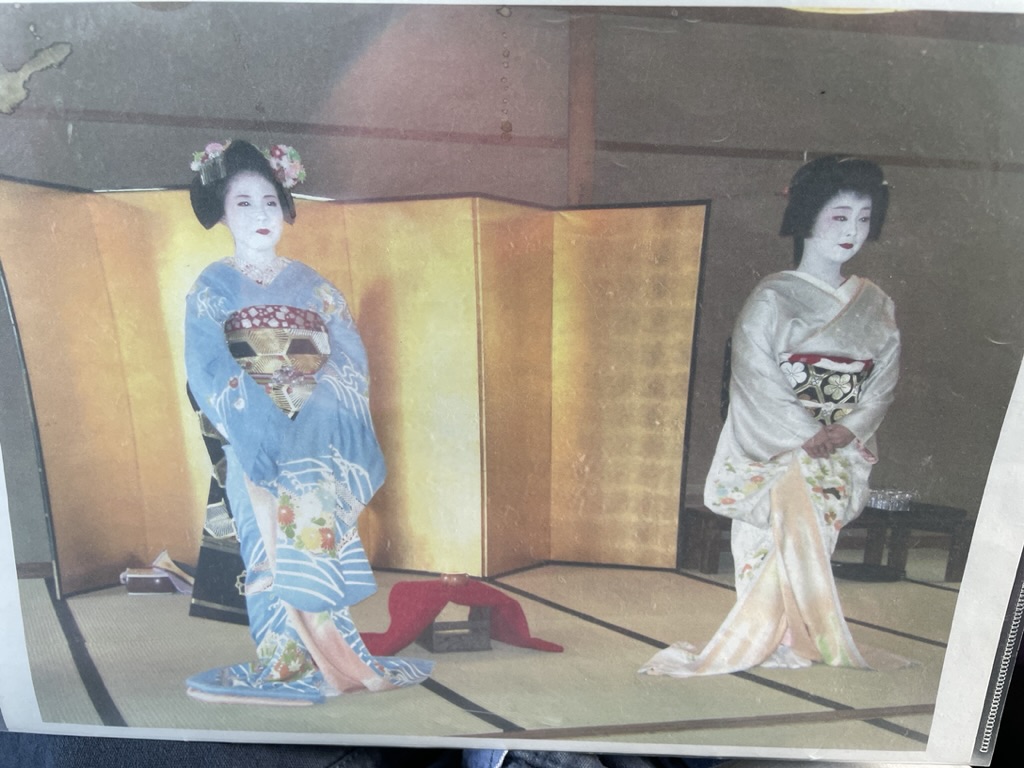
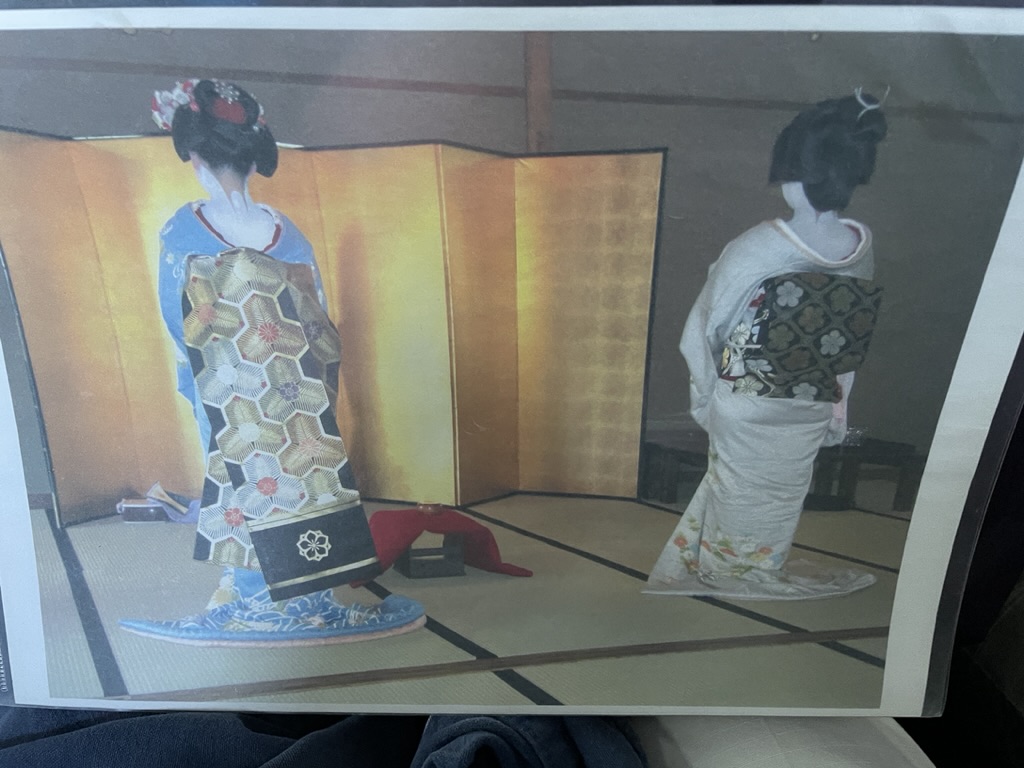
- When a couple of geishas came on board the ship to entertain us, one of the things they showed us is a game called “Tiger”. It’s much like the game of Rock/ Paper/ Scissors but in this game your choices are Tiger/ Warrior/ Old woman – the Tiger kills the Old woman, the Warrior kills the Tiger, and the Old woman is the Warrior’s mother, so she wins. It is played with a folding screen between two geishas and two audience members. The geishas and their volunteers make introductory motions to each other during the beginning of the song, then each volunteer and geisha go to their side of the screen to figure out what character they are going to be portraying (clawed hands out for tiger, jabbing spear for the warrior, or bent over and walking with a cane for the old woman). At the end of the music they all have to come out from their side of the screen pantomiming what character they have chosen and we see who is the winner!
- The current imperial family has been ruling for over 1,300 years – making it the longest ruling family in the world! However only the first son can inherit and, as the current emperor only had one daughter, she will not inherit. The Japanese people are trying to change this rule but right now the Emperor’s brother is the Crown Prince and he has one son. Meanwhile the princess made a love match and was able to marry a commoner.
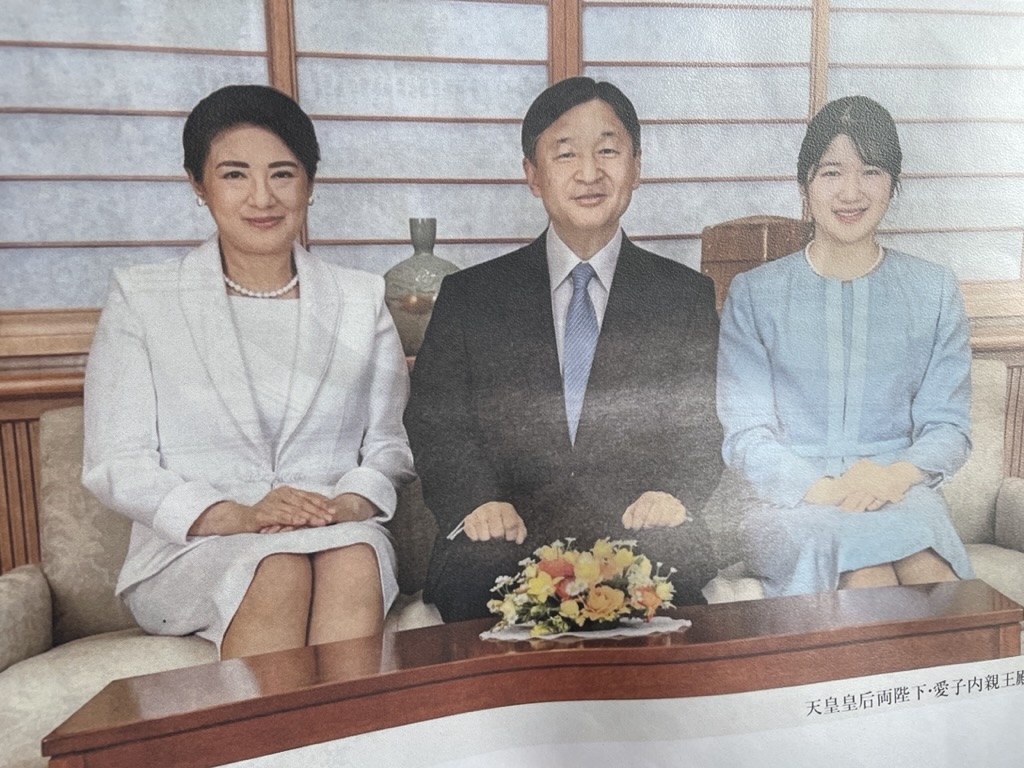
- We had a lovely blue sky day in Tokyo (one of our guides mentioned that Japan often has grey skies due to pollution streaming over from China) – too bad we don’t have more time in Tokyo – must come back!
